#vue js 2 events
Explore tagged Tumblr posts
Text
My Server Side Rendering thoughts
I'm tech advising my friends' startup and it's interesting. Out of our discussions, I had a thought I wanted to get down in ink.
Client Side Rendering sucks for small teams but is nearly impossible to escape in Standard Technologies^1.
^1: Cunningham's Law: "the best way to get the right answer on the internet is not to ask a question; it's to post the wrong answer"
Backend development is basically fine
Say that you are writing an internal tool website. In his case it's a sales-y CMS-y thing; an integrated wizard & search tool. Obviously there's a few domains there (the Requirements server! The Catalog & search product! the produced Proposals!) and there's a sane UML chart about how the layers interact. Cool.
You've picked a language like ts/js/go/py/php/kotlin for your backends based on skill availability, libraries, etc. You're done, right?
But!
Frontend dev still requires a completely different approach
Developing the frontend for this kind of sucks. You've written a sane set of microservices in your favorite backend technology, yes, but when it comes time to knit them together, you probably need to switch technologies. You're going to pick React (or equivalently Svelte, Vue; Solidjs, etc), because you want a Single Page Application website.
At WebScale(tm), this makes sense: nothing scales or is available like the users' own browsers for the interactivity parts of your app. But if you're optimizing for the simplicity and team size, I'm not sure you want to bring a completely second technology into this game.
Liveview writes the frontend for you ASTERISK! FOOTNOTE! SEE CIT!
My friend's background includes the Elixir/Phoenix/Liveview stack^2.
Liveview uses a persistent websocket between the client and server. The client sends browser events to the server across the socket. The server uses a react-like events-and-caching-and-reevaluating model to determine changes to state as a result. The server uses session state to maintain its own mirror of the browser's DOM, and then streams the differences to the frontend, where the standard clientside javascript library applies them, and the cycle continues.
^2: 15 bits entropy remain
Chris McCord on how and why Liveview is, c. 2021.
Ok, so...? How does this help the solo dev?
At this phase, separation of concerns is overrated and you're probably not doing it right anyway.
You're a small-team multi-hat dev. You are building this app by the seat of your pants; you are not sure the UI you're building is the right UI yet.
So if you do normal React stuff, the flow of data is something like:
... → [Raw Database Schema] → [Internal Business Object in e.g. python] → [Display-oriented GET API in python on server] → [Serialize JSON] → [React render in typescript on browser] → [React produces final DOM changes on browser]
Those "display oriented API"/Serialize/"react HTML" lines are really suspicious at this point. Even though you've modeled your business objects correctly, every change to the interaction model requires synchronized FE and BE changes.
This is more than a protocol problem: something like protobufs or tRPC or whatever let you better describe how the interface is changing, but you'll still need to consume/produce new data, FE & BE changes.
So it lets you instead write:
... → [Raw Database Schema] → [Internal Business Object in elixir] → [Server rendering in elixir & HEEx on server] → [Serialize LV updates] → [LV FE lib renders on browser]
Bennies
By regarding the produced DOM mirror as a server API, you can feel ok about writing custom display queries and privileged business model access in your backend code. It means you're not using your RESTful GET endpoints in this codepath, but it also means you're not spitting out that boilerplate with only one current caller that will never have a second caller...
By sending browser events to the server's mirror of the DOM, you don't need to dip into the browser behavior; you can write server code that responds to the user's semantic actions. One can go too far; probably most confirm modals etc should get maintained & triggered clientside, but liveviewers usually take the serverside loop.
This websocket is critical for scoping changes, because e.g. a form post down in the guts of the page might cause changes at distant locations in the DOM (a nested delete button deleting an element from a list?) and the client's browser needs to be told to do the refresh of those elements (the list and any changed elements and a parent object with an element count and...?). That didn't use server generated events, but those could exist too ofc.
How does Elixir keep getting away with it?!
The pat answer for how Liveview does this -- including Chris McCord's article -- is the Blazingly! Efficient! Nature! of the BEAM! VM! (everything is green threads; cluster routing of method calls and replication of state; resumption of failed units of computation, etc etc).
I'm incredibly suspicious of this.
Sure, BEAM solves these problems for the developer, but so does a redis instance (or just the DB you were using anyway! Postgres is no joke!) + frameworks. Lots of apps use session state and use adapters to store that state durably with the end dev not needing to get into the weeds about how. Library authors could do this. It might be easier or harder for a given library author to deliver this in a given language, but there are some very skilled library authors out there.
You, developer, do not yet have as many users as you hope. DevOps has deployment practices that BEAM does not fit into. BEAM's enormous multiplexing is not saving you more than just turning up a few more servers would. You would be writing in go or in c++ if you meant it.
So:
Why isn't there already a popular equivalent of LV in js/ts/py/php/kotlin/etc?
TL;DR: LiveviewJS seems like the closest/most complete option as I understand it.
There are other equivalents ofc. But they have nowhere near the same level of use, despite being in languages that are OoM more in-use.
Candidates include turbo, django unicorn, unpoly, React Server Components... But none are really right afaict!
I can kind of guess why they're not as popular, which is that if you do not need to tie up server assets on a per-client basis, you will not choose to tie up server assets on a per-client basis. Websocket state, client DOM mirrors, etc; it adds up.
If you're building a chat app or video app, obviously devoting a stateful local socket-per-client is a good tradeoff. But I feel like there are lots of models that are similar! Including the one my friend is facing, modifying a document with a lot of spooky action at a distance.
What's missing? The last mile(s)
We have the technology to render any given slice of the page on the server. But AFAIK there's no diff behavior or anything so it'll render the entire subtree. You can choose whether to ship back DOM updates or fully rendered HTML; it doesn't make much of a difference to my point IMO.
Using something like htmx, you could have a frontend form post cause a subtree of the DOM to get re-rendered on the backend and patched back into the document.
That's "fine" so far as it goes, but if (in general) a form post changes components at a distance and you're trying to avoid writing custom frontend-y code for this, you're going to need to target some fairly root component with the changed htmx and include a lot of redundancy -- a SPA that does a refresh of the whole business model.
Why aren't more people talking about this?
The pieces of architecture feel like things we've all had available for a while: websockets, servers that handle requests and websockets, session state, DOM diffing, DOM patching.
How did Elixir get there first (Chris McCord explains how he got there first, so that might just be the answer: spark of genius)? Why did nobody else follow? Is there just a blindingly obvious product out there that does it that I'm missing?
One thing I see is that the big difference is only around server pushed events. Remix/RSC gets us close enough if the browser is always in control. If it isn't, you gotta write your own notification mechanisms -- which you can do, but now you gotta do it, and they're definitely running on the client, and your product has taken on a whole notification pipeline thing.
0 notes
Photo

Vue JS 2 Tutorial #24 – Events (child to parent) Hey gang, in this Vue JS tutorial I'll introduce you to events, and how we can use them to pass data from a child component to a parent component in reaction to ... source
#child#Events#events tutorial#parent#tutorial#vue#vue event#vue js#vue js 2#vue js 2 events#vue js 2 tutorial#vue js 2 tutorial for beginners#vue js event#vue js events#vue js events tutorial#vue js tutorial#vue js tutorial for beginners#vue parent child communication#vuejs#vuejs 2 tutorial#vuejs tutorial#vujs tutorial for beginners
0 notes
Text
How Do You Choose A Vue JS Development Company?

With the market's evolving trends, having a strong digital presence is critical for gaining a competitive advantage. With business becoming more competitive by the day, it is critical to stay ahead of the curve and reach its target audience. This opens the door to the need for a responsive website and brand applications.
Vue.js stands out among the plethora of JavaScript frameworks used to build the core of a website. Since its initial release, the framework has grown in popularity and has become the preferred choice for businesses with high-traffic websites!
As brands strive to stay current, software developers must devote time to learning Vue.js. This is one of the main reasons why Vue Js developers are in high demand. But, to hire the best Vue JS development company, one must be well-versed in the nuances of the role. Let's dive in and learn about the framework, its benefits, and how to find a company that meets your needs!
What is Vue.js, exactly?
Vue.js is a popular open-source JS framework that helps developers create high-quality (Uls) for multi-page apps. As one of the most well-known JS frameworks in the world, it provides developers with a wide range of features such as animations, plugin systems, event handling, data binding, built-in directives, and so on. Its extensive ecosystem is the icing on the cake.
Whether you are a beginner or an experienced developer, Vue.js allows you to curate small and large-scale applications. This one-of-a-kind front-end framework employs a model-view-view-model (MVVM) architectural pattern to distinguish business logic from various graphical Uls. Vue.js stands out from the crowd because it is lightweight and simple to learn.
The Top Advantages of Hiring Vue.js Developers
Vue.js is a time-saving and cost-effective option to consider because it allows developers to extract many web components from before developed websites. They can borrow components from existing websites/applications and use them to improve their own. Vue.js developers also enjoy faster loading times for all their websites and applications. These are not the only options. Vue.js has more advantages. Let us delve deep and investigate them!
1. Enhanced Flexibility
Serving some flexibility as well as increased scalability to your developers while they curate user interfaces is a pure delight in such a tech-savvy world. Vue.js is supported by a variety of third-party libraries and components, making incorporating newer technologies a breeze.
In this manner, Vue Js development services can save the valuable time required to update the applications with market trends. Because of its multi-view-view-model architecture, Vue.js developers, like JavaScript developers, can access a variety of HTML blocks.
2. Simple to Understand
Vue.js provides developers with a simple structure, making it easy for newcomers to get their hands on this popular JavaScript framework. Vue.js, unlike other frameworks, does not need a steep learning curve. You only need a basic understanding of JavaScript and HTML/CSS to get started.
Furthermore, the browser plugin, which is available for Chrome and Firefox, makes it simple for developers to get started. The power of single-file components is used by Vue.js developers. The framework allows developers to store all JS, HTML, and CSS code in a single file, increasing efficiency.
3. High-Quality Outcomes
Vue.js developers can express their creativity because the framework is simple. When this occurs, some of the best possible outcomes outshine your brand and increase revenue. Because Vue.js is so integrated into other frameworks. It is simple for developers to create an all-inclusive application that includes both essential components and functionalities.
4. DOM Virtualization
When it comes to web pages, the Document Object Model (DOM) is at work. It contains objects that represent various HTML pages of various styles, elements, and content. Developers using Vue.js can align their operations with Virtual DOM, allowing for quick and easy changes.
Virtual DOM structures are dedicated JavaScript structures that absorb changes to the DOM. Once completed, the changes are compared to the original data structure, and only the most recent ones are reflected in the actual DOM. In this manner, web applications can amend changes and improve their performance.
5. Data Binding in Both Directions
This is one of the most desired features, and developers love it. Vue.js gives you an advantage in a competitive market by allowing for two-way communication. This distinct advantage provides developers with a link between model data updates and UI, simplifying their work. This allows them to transfer changes made in the UI to the data and vice versa.
These are some of the most common reasons why businesses are looking to hire Vue.js developers to help them take their brand to the next level.
What Should You Look For in a Vue.js Development Company?
Hiring a Vue.js development company is no easy task. When it comes to hiring a Vue.js development company, several factors must be considered. Here are a few of the most important ones to help you with your research.
1. Customization Level
The company you want to work with should give you enough leeway to meet your internal project deadlines. Flexibility can help boost creativity when curating some excellent user interfaces (UI). This produces even more results tailored to your target audience.
You can also assess the company's adaptability based on the level of customization it provides and how it incorporates feedback. Because not all businesses accept feedback and make the necessary changes, you should make certain that the company you've hired checks this box.
2. Time to Complete
When it comes to hiring a Vue.js development company, this is one of the most important considerations. Their turnaround time should always correspond to your priorities. You don't want to be plagued by missed deadlines and incomplete work. As a result, you should always ensure that the company you deal with is responsive and follows through on its promises.
3. Client Reviews
Client feedback is an important factor to consider, also to their tech-savvy approach and the wide range of services offered. When looking for a Vue.js development company, make sure it is a well-known and trusted brand.
4. Team Knowledge
This is an important consideration, especially when hiring a technical firm. Unlike some other industries, where core technical knowledge can be compromised when it comes to business, Vue.js is a specific field where technical expertise is required.
Acing your Vue.js game becomes difficult without some basic knowledge of programming languages. This is the most important reason why you should look for team expertise when hiring a dedicated Vue.js development company.
5. Cost-effective
Hiring entails increased budgets, so it is critical to select a cost-effective option to streamline your business expenditure. This can be determined by their services, performance, and general expertise, all which state their worth.
Finishing up
If you want to take your brand to the next level and expand your online presence without straining your current resources, it's time to hire a Vue.js developer. In some cases, you may want to consider hiring a development company to handle your Vue.js needs.
While many companies claim to offer dependable Vue.js solutions, only a few can back it up. InstaIT is one such company that has a team of dedicated Vue.js experts to help you get started. Our professionals use their years of experience to understand your specific technology needs.
Connect with our experienced teams and begin driving your company to success!
0 notes
Text
React JS Tutorial for Beginners | What is React JS and Why use React JS?
What is React JS?
It's a JavaScript library for creating user interfaces, to put it simply. Let's start with the fundamentals before moving on to the rest of the React JS course. There are two words in this definition: javascript library and user interface. Let's have a look at what these terms signify.
The library is a collection of pre-written code that is efficient, complicated, well-written, and easily accessible. As a result, it simplifies our lives and allows us to use code written by others with ease.
Assume we wish to find the cosine value of 20. Rather of obsessing over how this library was created, we simply use the math library. For instance, Math.cos (20).
The user interface is what the user sees right away.
React JS is a powerful tool that breaks down a page into many building elements known as components, allowing for fast front-end development.
React JS pre-requisites
There are some prerequisites to bear in mind before we plunge into the depths of our React JS Tutorial. We need a fundamental understanding of HTML, CSS, and JavaScript because these are the cornerstones of any frontend development and are required to become an expert.
1. HTML
(Hypertext Markup Language) is an acronym for Hypertext Markup Language.
It's a markup language used to make web pages and documents.
Tags for Beginners:
div> span>: div> span> is a tag that is used to organise elements.
form>: to create a form that will be used to collect data from users.
input>: specifies what and how users' input should be collected.
button>: creates a button and specifies the functions that will be executed when the button is clicked.
2. CSS
Cascading Style Sheet (CSS) is an acronym for Cascading Style Sheets (CSS).
It's in charge of the website's appearance and feel.
You can apply styling to HTML items that you've selected.
Syntax at a High Level:
selector{property1 : value1; property2 : value2; property3 : value3;}
CSS has three main selectors: selectors, selectors, and selectors, selectors.
In an HTML document, id(#) is unique.A group of elements is referred to as a class(.).-Box Model Tag(tag name) – all tags of a specific tag name
Every constituent is given the shape of a rectangular box.Four edges make up each box.Border Padding Padding Padding Padding Padding Padding Padding Padding PaddingOther features, such as colours, fonts, and backgrounds, must also be well-understood.
3, JavaScript
Arrays
Objects
Functions
Control Flow Statements
DOM Manipulation
DOM Events
Closure
Prototype
OOPs
With this in mind, you can ensure that the rest of the
React JS Tutorial
is clear to you.
Why use React JS?
We can move on to the next level of the React JS tutorial now that you know what React is and why we utilise it.
In front-end development, React is a strong and widely used tool.
React is more popular than Vue and Angular, which are competitors. The fact that React is a library is one of the key reasons for its success. As a result, as compared to Angular, which is a framework, you have more control over the application's flow.
The components that aid in optimization can be easily reused. In comparison to Angular and Vue, React has an extremely low learning curve. React is used by some of the world's most well-known companies, including Facebook, Netflix, PayPal, Tesla, and others.
When we create a single-page application, we can see the full benefits of React. React developers have more job opportunities than Angular developers.
Single Page Application
Multiple server requests were sent with multiple reloading in the traditional system. This resulted in lower performance, increased bandwidth, and increased processing time. Single-page apps, on the other hand, make only one request to the server, and the server responds as the data is re-written.
Components make up the entirety of the web page. Virtual DOM locates the component that needs to be reloaded and updates that item in the actual DOM without reloading all of the webpage's components.
Single-page applications save time and bandwidth while also improving performance. Gmail, Facebook, and Twitter are examples of SPA.
JSX
JavaScript XML is abbreviated as JSX.
It's utilised by React to allow HTM and JavaScript code to coexist.
In the past, we used to include JavaScript in HTML. However, using JSX, you may now use HTML in JavaScript.
https://www.phptpoint.com/reactjs-tutorial/
0 notes
Photo

Which front-end framework is the easiest?
Building a front-end application requires the combined use of HTML, which is responsible for the basic layout of the web page, CSS for visual formatting, and JavaScript for maintaining user interaction. Front-end frameworks are needed to make the work of web developers easier - these software packages generally offer ready-made / reusable code modules, standardized front-end technologies and ready-to-use interface blocks that allow developers to create a web faster and simpler applications and user interfaces.
There are many front-end frameworks on the web and most of them run on JavaScript as the source language. The developers are still arguing fiercely over which is the best. So, in choosing a framework that suits your needs, there are a few factors and tons of nuances to consider.
React is one of the most popular front-end frameworks on the market. It is a library based on JavaScript components with JSX syntax, developed by Facebook and first published in 2011. Later, in 2013, it became an open library. Source library, which makes it a little different from the classic definition of the framework.
React is popular with over 3 million active users and is supported by a large community - 80% of developers have had at least one positive experience with React in their projects and over 1.5 million websites have been created with its help.
40% of JS developers are using Vue.js and over 700,000 websites have been built with its help. Vue is not supported by major players like some other frameworks. It was first published in 2014 and created by Evan You, the person behind the development of another popular framework Angular.
Vue includes a virtual DOM, component-based architecture and two-way binding that underpin its high-speed performance - all of which make it easy to update related components and track data changes, which is desirable for any app. Developers who choose Vue.js can take advantage of its small size compared to React or other frameworks.
Also called Angular 2+, it is a modern TypeScript-based open source framework and one of the most popular software development tools today. Over 600,000 websites have been developed with its help.
Angular (released in 2016) is an upgraded edition of AngularJS with improved performance and many powerful additional features. Angular offers two-way data binding for instant synchronization between the model and the view, so that any changes in the view are immediately reflected in the model and vice versa. Angular Features Guidelines that allow developers to program special DOM behaviors that enable the creation of rich and dynamic HTML content.
jQuery is one of the oldest open source JavaScript front-end frameworks. Although it is a true veteran of this market, it can still be considered one of the best front-end frameworks of 2021 as it is almost relevant for modern development conditions with a few exceptions. JQuery development can be a pretty effective tool for building desktop-based JavaScript applications. JQuery's streamlined code logic, cross-browser support and streamlined approach to dynamic content are able to deliver perfect website interactivity even in 2021.
Ember, the open source MVVM JavaScript web framework, was released in 2011 and has since gained tremendous popularity. Around 14% of JavaScript professionals use it or have used it in their practice. With 30,000 websites developed, this framework is considered quite stable and works seamlessly for various needs.
Backbone.JS is a free and open source JavaScript library developed in 2010 by Jeremy Ashkenas, the author of CoffeeScript. About 7% of front-end developers have had positive experiences with Backbone.JS and it has been used during the development of 600,000 websites.
Backbone.js follows an MVC / MVP development concept. It encourages you to translate your data into models, DOM manipulations into views, and connect them together via events. In other words, it presents your data as templates that can be created, validated, deleted, and stored on the server.
Semantic UI is a relatively young player (2014) in the front-end frameworks market. Powered by LESS and jQuery, it is a framework for CSS that was developed by Jack Lukicthis, a full-stack developer, with the idea of building it based on organic language syntax. In no time, in 2015 and later, it became one of the top JavaScript projects on GitHub.
It has a sleek and flat design that provides a streamlined user experience. Semantic UI provides a set of tools to configure themes and CSS, JavaScript, font files and an intuitive inheritance system so you can share the code once you've created it with other applications.
0 notes
Link
Angular 12, the most recent production unharness of Google’s widespread TypeScript-based net framework, has received an associate update. Angular 12.1, arrived quarter day, adds compiler support for shorthand property declarations in addition to fixes for the compiler, compiler interface, router, and repair employees.
The Angular twelve.1 purpose unharness additionally introduces Apis to prefer into correct take a look at teardown behavior. The compiler fixes pertain to problems like unterminated interpolation and consider restoration, whereas the service employee fixes pertain to the naming, accessing, and clean-up of service employee caches.
[ additionally on InfoWorld: Angular, React, Vue: JavaScript frameworks compared ]
Published could twelve, Angular twelve is out there on GitHub, following varied beta unharnesses and release candidates. Angular twelve deprecates the heritage read Engine compilation and rendering pipeline in favor of the newer vine technology, a next-generation compilation and rendering pipeline that gives quicker AOT (ahead of time) compilation.
The Angular team noted that read Engines are removed during a future unharness. Current libraries victimization read Engine can still work with vine apps, however, library authors square measure suggested to begin transitioning to the vine.
Also in Angular twelve, the Ivy-based language service, providing capabilities like code completions and hints within templates, moves from opt-in to on by default. different new options and enhancements within the version twelve release:
To improve compiler interface performance, the progressive compilation is allowed within the presence of redirected supply files.
Nullish coalescing, to write down clearer code in matter categories, currently works with Angular templates.
Both Angular CDK and Angular Material expose a replacement Sass API surface designed for consumption with the new @use syntax. once change to Angular twelve, the associate app can mechanically switch to the new API by change via metric weight unit update.
Tools square measure on the market to migrate heritage localization IDs to IDs victimization the most recent algorithms.
Components currently support inline Sass within the designs field of the @component decorator.
Running metric weight unit build currently defaults to production, saving steps, and serving to forestall accidental readying of development builds.
Strict mode, to catch errors earlier within the development cycle, is enabled by default within the interface.
The Webpack five-module bundler is production-ready.
Support for the IE11 browser has been deprecated.
For the compiler, support is obtainable for reworking element vogue resources.
For the language service, Angular property completions square measure provided solely in templates.
For the compiler-cli, a context possibility is introduced for any request that permits the provision of capricious knowledge during a type-safe method. This feature addresses the necessity to piece interceptors in hypertext transfer protocol shopper on a per-request basis.
For animations, DOM components currently square measure properly removed once the basis read is removed. this can be a breaking amendment.
To improve performance, unused strategies are aloof from DomAdapter.
A new format is extra to localize-extract, referred to as legacy-migrate, to get a JSON file which will be wont to map heritage message IDs to canonical ones.
Strict null checks can report on a fraction doubtless being null. this can be a breaking amendment.
The form of the APP-INITIALIZER token has been modified to a lot of accurately replicate the categories of come back values handled by Angular. this can be a breaking amendment.
Support has been extra for disabling animations through BrowserAnimationsModulewithConfig.
The emit event possibility was extra for FormArray and FormGroup. this can be a breaking amendment.
More fine-tuned management has been extra in routerLinkActiveOptions.
Custom router outlet implementations are square measure allowable.
Support has been extra for matter four.2, and support for matter four.0 and matter four.1 has been born.
Implementing the appendAll() technique on HttpParams.
For forms, min and Georgia home boy validators square measure being introduced.
Exporting an inventory of hypertext transfer protocol standing codes.
Addition of a feature to the Angular Language Service that allows accessing the locations for parts that use a templet file.
The addition of nosology to counsel turning on strict templates, providing the way for the language server to retrieve compiler choices nosology.
A patch adding associate API to retrieve the templet type check block for a templet, if any, at a file location, and choice of the TS node within the TCB cherish the templet node at that the request for a TCB was created. this can facilitate debugging.
A variety of bug fixes additionally were featured, moving the compiler, compiler-cli, Bazel build tool, the router, and different elements of Angular. Angular 12 has arrived with a pile of improvements to its performance, language service, compiler, form validation, and much more. The deprecation of the View engine and incorporation of the Ivy ecosystem is certainly one of the major enhancements considered in version 12.
Angular 12 has witnessed improvement in styling, Nullish Coalescing, and shifting from Legacy i18n Message IDs as some other important features that make this release a stable one. AngularJS training in Kochi is one of the trending programs that every developer desires to master in Angular JS. AngularJS training institute in Kochi with all prerequisites is provided by the best Angular JS training.
0 notes
Link
JSer.info #537 - 次期LTS候補となるNode.js 16がリリースされました。 V8 9.0へアップデート、timers/promisesの追加、Apple Silicon向けのprebuiltバイナリの配布に対応しています。 また、fs.rmdirのrecursiveオプションの非推奨化、process.bindingを使ったアクセスの非推奨化module.createRequireFromPathの削除なども含まれています。 Node.js 16にはNode.js 15の変更も含まれるので、npm 7へのアップデートやUnhandled Rejections時の終了ステータスの変更などの破壊的な変更も含まれています。 Node.js 16は2021-10-26からLTSとなる予定です。 また、Node.js 10.xは2021-04-30でサポートが終了されます。 Chrome 91 betaがリリースされました。 Origin Trialとして、Service Workerのmanifestのcapture_links、WebTransport、WebXR Plane Detection API。 その他には、Timerの解像度を仕様準拠の値に変更、WebSockets over HTTP/2のサポート、Service WorkerでES Modulesのサポートなどが含まれています。 Node.jsとTypeScriptを扱うORMであるPrismaがProduction Readyというリリースされています。 記事では、Primsaを構成するPrisma Client、Prisma Migrate、Prisma StudioというツールとPrismaの特徴について紹介されています。 ヘッドライン Node v16.0.0 (Current) | Node.js nodejs.org/en/blog/release/v16.0.0/ node.js ReleaseNote Node.js 16.0.0リリース。 V8 9.0へアップデート、timers/promisesの追加、Apple Silicon向けのprebuiltバイナリの配布など。 fs.rmdirのrecursiveオプションの非推奨化、process.bindingを使ったアクセスの非推奨化、module.createRequireFromPathの削除など。 これに加えてNode 15での変更であるnpm 7へのアップデートなどが含まれている Release v11.5.0 · raineorshine/npm-check-updates github.com/raineorshine/npm-check-updates/releases/tag/v11.5.0 npm Tools ReleaseNote npm-check-updates 11.5.0リリース。 yarnの自動検出に対応 Release v9.0.0 · puppeteer/puppeteer github.com/puppeteer/puppeteer/releases/tag/v9.0.0 Chrome browser library ReleaseNote Puppeteer 9.0.0リリース。 Chromium 91へアップデート、Apple M1のサポート、FileChooser.cancel()が同期処理になるなど Chromium Blog: Chrome 91: Handwriting Recognition, WebXR Plane Detection and More blog.chromium.org/2021/04/chrome-91-handwriting-recognition-webxr.html Chrome ReleaseNote Chrome 91ベータリリース。 Origin Trialとして、Service Workerのmanifestのcapture_links、WebTransport、WebXR Plane Detection API。 Timerの解像度を仕様準拠の値に変更、WebSockets over HTTP/2のサポート、Service WorkerでES Modulesのサポートなど Release v4.1.0 · reduxjs/redux github.com/reduxjs/redux/releases/tag/v4.1.0 redux JavaScript library ReleaseNote Redux 4.1.0リリース。 エラーメッセージをproduction buildから除外することでファイルサイズの改善など アーティクル Understanding TypeScript's Popularity | Notes orta.io/notes/js/why-typescript TypeScript article history opinion TypeScriptがなぜ人気となったのかを主要なイベントのタイムラインや類似するツールと比較しながら見ている記事。 Prisma – The Complete ORM for Node.js & TypeScript www.prisma.io/blog/prisma-the-complete-orm-inw24qjeawmb node.js TypeScript MySQL PostgreSQL article Node.jsとTypeScript向けのORMマッパーであるPrismaがProduction Readyとなった。 スキーマからTypeScriptの型定義を出力して利用できるPrisma Client、データモデルからPrisma Migrate、GUIでデータの閲覧と変更ができるPrisma Studioを持つ Using asynchronous web APIs from WebAssembly web.dev/asyncify/ WebAssembly JavaScript article Emscriptenで非同期を扱うAsyncify、C++とJS間の値を変換するEmbind、JavaScriptを組み合わせてWasmから非同期のWebPlatformAPIを扱う方法について。 The great SameSite confusion :: jub0bs.com jub0bs.com/posts/2021-01-29-great-samesite-confusion/ security article cross-site/same-siteとcross-origin/same-originの違いについての解説記事。 Same-Site Cookieの動作とメカニズムについて Overflow Issues In CSS — Smashing Magazine www.smashingmagazine.com/2021/04/css-overflow-issues/ CSS article ページの幅を突き抜ける要素の問題と対策についての記事。 要素やCSSプロパティごとに問題の原因や対応方法について紹介している。 またoverflowしている要素の見つけた方などのデバッグ方法について サイト、サービス、ドキュメント Headless WYSIWYG Text Editor – tiptap editor www.tiptap.dev/ JavaScript editor library ProseMirrorベースのWYSIWYGエディタライブラリ。 Vue、React、Svelteなどに対応、Y.jsを使ったリアルタイムコラボレーションの対応、シンタックスハイライトやMarkdownの記法を使ったショートカットに対応している ソフトウェア、ツール、ライブラリ関係 mhmd-22/ezgesture: Small js library for enabling gesture events github.com/mhmd-22/ezgesture JavaScript library ドラッグ、スワイプ、ピンチイン/アウトを扱うライブラリ Vue.js UI/UX Library - Inkline inkline.io/ Vue UI library Vue向けのUIフレームワーク Style Check style-check.austingil.com/ CSS Tools CSSを読み込んでHTML要素に対するスタイルの影響をチェックできるツール 書籍関係 The GraphQL Guide graphql.guide/ GraphQL book video GraphQLについての書籍と動画。 John ResigとLoren Sands-RamshawによるGraphQLのガイド。 GraphQLの解説、フロントエンド、バックエンド、React、Vue、Android、iOSについて扱う
0 notes
Text
8 Websites You Should Visit To Learn Web Development
The Top 8 Best Websites
1. FreeCodeCamp (Free)

FreeCodeCamp is most likely extraordinary compared to other free assets on the web to learn web improvement. It covers each point you need to learn: HTML, CSS (Flexbox, Bootstrap, Sass, and Grid) and Javascript (Jquery, React). It likewise encourages you everything about responsive website composition. The site offers you many activities and activities to test your insight.
2. Udemy (Paid)

Udemy is an internet learning stage covering each subject you can consider. At the present time, it has more than 80,000 courses prepared to instruct you to code. The greater part of the courses are paid, yet some of them are free. Its primary benefit is that the courses are more often than not vigorously limited.
Simply go to the Udemy site and track down the correct course for you. Enter your prerequisites and get yourself a reasonable teacher.
In any case, I enthusiastically suggest you take Colt Steel's Web Developer Bootcamp course. It covers every one of the essentials you need to dominate in the event that you need to begin learning web improvement.
3. Coursera (Free)

Like Udemy, Coursera is a well known internet learning stage where every one of the courses are free (Payment needed for evaluated tasks). It was established by Stanford educators Daphne Koller and Andrew Ng. Coursera works with the top instructive foundations on the planet that give more than 1000 courses to Coursera.
Top educators from the most esteemed schools around the globe encourage Coursera courses. You can get to your courses at whatever point, any place. You get an electronic declaration in the wake of finishing a course.
Coursera is a magnificent site on the off chance that you need to learn web advancement.
4. Treehouse (Paid)
Treehouse is a very notable web based learning stage in web advancement. It has more than 1000 quality recordings covering points like web improvement, website architecture, and business.
Treehouse permits clients to learn at their own speed, plan their learning meetings and pick distinctive coding dialects for all levels, from novice to cutting edge. Treehouse holds your hand during the entire learning measure.
Treehouse may be probably the best asset on the web to learn web advancement, yet it is expensive, it is about 200$/Month.
5. Codecademy (Free and Paid Version)

Codeacademy is quite possibly the most well known coding sites on the web. It has shown in excess of 45 million clients to code. Its primary benefit is that it has many free courses.
In case you're keen on learning web advancement, you can discover numerous courses covering themes like HTML, CSS, and Javascript. Codecademy additionally has a genius rendition giving you admittance to a full Web Developer Course covering all you require to know. With the genius form, you additionally approach many coding activities and ventures.
Codecademy is an extraordinary site in the event that you need to get the hang of coding and web advancement, yet the free form is really confined, it doesn't offer you as much as the genius rendition. In the event that you would prefer not to purchase the master adaptation, I propose you investigate the free assets recommended on this rundown.
6. W3Schools (Free)

Very much like FreeCodeCamp, W3Schools is a site where you can become familiar with about programming and web advancement. You'll have the option to become familiar with the three center advances of the web, HTML, CSS, and Javascript. Moreover, you'll learn Sass, Bootstrap, and React. There are additionally many activities covering different points to test your understanding of the language you picked.
7. HTMLDog (Free)

HTMLDog is a site covering the three essential dialects of web advancement, HTML, CSS, and Javascript. Every language has various levels, fledgling, halfway and progressed. The data on the site is introduced in a decipherable and reasonable style. It's an extraordinary site to comprehend the center ideas of every one of the three dialects.
8. Traversy Media (Free)
Traversy media is a youtube channel made by Brad Traversy. His youtube channel covers practically every point in regards to web improvement, from HTML, CSS, and Javascript to every one of the various structures and libraries (Sass, Bootstrap, Angular, React, Vue Js). He likewise makes instructional exercises telling you the best way to make your page and site. I have observed the greater part of his recordings, and I think he is an incredible person. Look at his recordings notwithstanding a course you may be taking on Udemy/Coursera or on the off chance that you are learning on FreeCodeCamp/W3Schools.
0 notes
Video
youtube
Vue JS #2 - Using props to pass data, click event and for loop
0 notes
Text
So, You’Ve Won An Exciting Redesign…What Now?

The transitioning of power is fraught with difficulties. Different teams have different values, different experience, different expertise, different priorities, and that leads to different tooling, and different methodologies.
It’s tempting to think of web design as an end-to-end process, starting with research and concluding with metrics. The reality is that most designers and developers join projects part-way through an ongoing process.
That leaves us with a difficult choice: do we try and meet the client’s expectations with our own toolset, or adapt to the tools and processes that are already in place?
For anyone who’s taking over a web project from a different designer/developer/agency (D/D/A), here’s a practical guide to help you make a success of the transition.
Step 1: Find Out What Went Wrong
99.99% of the time, something broke down in the previous client-D/D/A relationship.
In my experience it’s almost never about money. Most clients are willing to pay above the basic market rate if they believe they’re receiving a good return on their investment. A client that tells you the previous D/D/A is simply too expensive is anticipating negotiating your fees.
happy clients don’t shop around
Occasionally you’ll find that a freelance designer has been headhunted by an agency, and is no longer available. Occasionally the company outgrows a D/D/A, moving into areas that the D/D/A doesn’t support. But these situations are rare, happy clients — even moderately content clients — don’t shop around. If they’re speaking to you, something motivated them to do so.
It is alarmingly common that a D/D/A simply goes AWOL. It’s most common at the lower end of the market where the sums of money involved are less likely to prompt a legal dispute. Frequently, an unreputable D/D/A will ghost a client in favour of a better, newer opportunity.
Sometimes the client hires a new manager, and the new manager ushers in revised expectations that the previous D/D/A can’t meet.
Most commonly, the previous D/D/A has dropped the ball one too many times — mistakes happen, and reasonable clients will tolerate them provided they are rectified promptly, but everyone has their limits.
Most clients will be more than happy to explain what went wrong in the previous relationship; it will inevitably be a one-sided explanation, but it will help you to understand the client’s expectations.
Be extremely wary of a client who doesn’t know what went wrong. Be even more wary of a client who talks about “upgrading” their outsourcing — they’re trying to flatter you. In these cases the client may well be hiding something — like their failure to pay invoices.
Remember: at some point the previous D/D/A was new, and excited about having a new client, was optimistic about the project, and it didn’t end well. The best way to not repeat mistakes is to learn from them, and to do that you need to know what they were.
Step 2: Carry Out a Comprehensive Audit
We’re often so eager to secure new work, that we rush to have the client sign on the dotted line, expecting to be able to tackle any problems later.
It is imperative that as a professional, you keep your promises. Before you make those promises, take your time to understand the project and related business. If a client is invested enough to sign a contract with you they won’t mind you doing due diligence first.
Is There Still a Relationship With the Previous Designer/Developer/Agency?
Clients rarely have a full picture of their project — they’re not web professionals, if they were they’d be building their own sites. Your best source of information is the previous D/D/A.
Before you contact the previous D/D/A check with your client; it’s possible they don’t know they’re being replaced yet. If your client is fine with it, then reach out.
When you speak to the previous D/D/A be sensitive to the fact that you’re taking money out of their pocket. Certainly the previous D/D/A may tell you where to go, they may ignore you altogether, but most will be pragmatic about handing over a project if only to ensure their final invoice to their now ex-client is paid promptly.
Every site has its idiosyncrasies, if you can establish a friendly rapport with the previous D/D/A then the transition will be considerably less bumpy.
Who Controls the Domain Name(s)?
In my opinion a company’s domain name(s) should always be held by the company; it’s such an essential business asset that it should be guarded as jealously as the company’s bank accounts.
Unfortunately there are businesses that outsource everything to do with the web. If the break with the previous D/D/A is acrimonious then securing the domain name could be problematic.
It’s not your job to secure the domain name — you have no leverage, the client does. It is your job to impress upon the client how mission-critical the domain name(s) is.
Who Controls the Hosting?
Hosting arrangements vary from project to project. It’s not uncommon, nor unreasonable, for the previous D/D/A to be hosting the client’s site on their own space. If that is the case, be prepared to migrate it quickly either to your own server, or a dedicated space.
If you’re migrating onto a new space pay particular attention to the email provision. Taking over a project usually means taking over a live project, and that usually means email accounts.
In any case, you need full access to the hosting space. You certainly need FTP access, you probably need SSH access.
In addition to hosting, check if your client’s site uses a CDN, and if it does, who has control of it.
Backend Source Code
Once you have FTP access to the hosting server you can probably grab all backend code from the server.
The benefit of grabbing the code from the server — as opposed to accepting files from the previous D/D/A — is that you can be absolutely certain you’re getting the current (working) code.
If the client has broken with the previous D/D/A because they were unable to deliver on a particular task, you do not want to be working with files that have been partially modified.
Fresh Installs
If you’re working with something like a CMS, it’s often a good idea to run a fresh install on your server, and then copy across any templates, plugins, and migrate the database.
Frontend Source Code
When it comes to acquiring source code, frontend code is far more problematic than backend.
frontend code is far more problematic than backend
If the previous D/D/A is even part-way competent then the CSS and JavaScript on the web space is minified. Minified CSS is not too problematic and can be unminified fairly easily, but you do not want to be unpicking a minified JavaScript file — I once had a project in which a developer had minified his own code in the same file with all of his dependencies, including both Vue and jQuery [yes, I know].
Dealing with frontend source code can take on an additional dimension if you discover that the previous D/D/A used techniques you don’t — using Less instead of Sass, or writing scripts in TypeScript.
Unminifying CSS & JavaScript
Unminifying (or beautifying, or prettifying) code is reasonably easy. There are tools online that will help, including Unminify, Online CSS Unminifier, FreeFormatter, JS Minify Unminify, and more. You’ll also find plenty of extensions for code editors including HTML-CSS-JS Prettify for Sublime Text, and Atom-Beautify for Atom. You’ll find that some editors have the functionality built in.
A word of warning: code beautification does not restore comments, and in the case of JavaScript, does not unobfuscate variable names. Beautifying code is no substitute for a copy of the original, unminified source code.
Emergency Measures
If unminifying the source code isn’t possible for any reason, or more likely, the unminified JavaScript still looks like minified code — albeit nicely formatted minified code — then your last resort is to import the code and override it where necessary.
The first thing to do in this case is to explain the situation to your client. Make sure they understand this is a temporary patch that you’ll iron-out as you rebuild parts of the project.
Then, copy and paste the old minified code into a fresh project setup. For CSS that probably means creating a legacy.scss file, including the old CSS, and importing it into your own Sass. For JavaScript, create a legacy.js file, add all the old JS, and import that.
This will result in a much bigger set of files than necessary, you may end up using !important in your style declarations [yuck], and you’ll trigger lots of Lighthouse warnings about surplus code.
However, in the likely event that your client has a long list of changes they wanted live yesterday, this dirty hack will give you a working site that you can then rebuild piece by piece over time.
Assets
Assets normally means images, and images can normally be grabbed via FTP.
Occasionally — although less occasionally now image files rarely contain text — you’ll need the source files to make changes to images.
Whether or not the client has them, or if the previous D/D/A will hand them over, depends largely on the agreement between the client and the previous D/D/A.
Most businesses are reasonably aware of the importance of brand assets, so you’ll probably find they at least have a copy of their logo; whether it’s an SVG or a JPG is another matter entirely. Impress upon them the importance of locating those files for you.
Third Party Code
It is rare to receive a project that doesn’t rely on third party code. That third party code is probably entwined in the custom source code, and unpicking it is a time-consuming job.
It is very likely the previous D/D/A used a library or framework, and given the increasing number of them, it’s even more likely that the library or framework they used is not the one you prefer.
Whether you choose to unpick the code and swap out the previous D/D/A’s dependencies for your own preferences (usually faster in the long term), or whether you choose to work with what you’re given (usually faster in the short term) is entirely up to you.
In my experience it’s no hardship to pick up another CSS library; switching from one JavaScript framework to another is a substantially bigger job involving not just syntax but core concepts.
Beware Build Environments
Everyone has their own way of doing things. Some D/D/As embrace build environments, some do not. Some build environments are simple to use, some are not. Some build environments are adaptable to your process, some are not.
Unlike adopting a library, or even a framework, adopting a new build process is rarely a good idea
Build environments are numerous — Gulp, Grunt, and Webpack are all popular — and D/D/As are almost as opinionated about them as they are about CMS.
In lieu of raw files, it’s not uncommon for the previous D/D/A to tell you to “just run such-and-such CLI” command, to match up your local environment to theirs. Unlike adopting a library, or even a framework, adopting a new build process is rarely a good idea because you’re relegating yourself from expert to novice at a time when you’ve yet to earn your new client’s trust.
Stand your ground. Their approach failed, that’s why you’ve been brought in. You do you.
Who is Licensed?
Any third part code that has been paid for is licensed. Always check who holds these licenses. As well as being legally required, valid licenses are normally required for updates, bug fixes, and in some cases support.
Common pitfalls include: font licenses (which may be licensed under the previous D/D/A’s Creative Cloud, Fontstand, Monotype, etc. account); stock image licenses (which may be licensed for use by the previous D/D/A alone); and plugins (which are frequently bulk-licensed to D/D/As in bundles).
It’s depressingly common to find clients using unlicensed assets. On more than one occasion I’ve had to explain to a client the potential consequences of using pirated fonts.
Fortunately it’s increasingly common for third party providers to attach a licence to a specified domain, which means you may be able to claim the licence on behalf of your client. Major suppliers like CMS and ecommerce solutions frequently have an option for the previous developer to release a licence and allow you to claim it.
In the case of licensing, if you’re unsure, do not be afraid to reach out to the third party provider and check with them if your client is licensed once they break ties with their previous D/D/A.
The only thing that sours a client relationship faster than telling them they need to buy a license they thought they’d already paid for, is telling them they’re being sued for copyright infringement.
Protect your client, and protect yourself, by making sure everything is licensed properly. If you can get something in writing to that effect from the previous D/D/A, do.
Who Has the Research and Analytics?
One of the major benefits of taking over a site, as opposed to building from scratch, is that you have a measurable set of site-specific data to guide your decision making.
This only applies if you have the data, so ask to be added to the client’s analytics account.
There’s a strong chance that the design research carried out by the previous D/D/A is considered an internal document, not a deliverable, by the previous D/D/A. Check with your client: if they paid for the research (is it specified on an invoice?) then they’re entitled to a copy.
We Have a Blog Too…
Clients have a tendency to use the term “website” as a catch-all term for everything digital.
When you take responsibility for a website, you’re almost always expected to take responsibility for any digital service the client uses. That means, newsletter services like Mailchimp, customer service accounts like Intercom, and 227,000 page WordPress blogs that they forgot to mention in the initial brief.
Repeat the whole of Step 2 for every additional app, micro-site, blog, and anything else the client has, unless you are expressly told by the client not to.
Step 3: The Point of No Return
Up until now, you haven’t asked the client to sign on the dotted line. This whole process is part of your due diligence.
By checking these things you can identify unforeseen problems, and potential costs. Are you tied to an obscure build process? Do you need to relicense the CMS? Do you need to recreate all of the site assets?
Some of these conversations are hard to have, but the time to have them is now
If there is any question of the project being more complex than anticipated, have an honest conversation with your client — they will appreciate your transparency, and they’ll appreciate being kept informed. Any client who doesn’t value a clear picture of what they’re paying you for, isn’t a client you want.
Some of these conversations are hard to have, but the time to have them is now, not three months down the line.
This is the point of no return. From this point on, any problems aren’t the previous D/D/A’s, they’re yours.
Change the Passwords
For every service you have, from the newsletter login, to the CMS login, to the FTP details, change the password. (Make sure you notify the client.)
Set Up a Staging Site
You’re going to need a staging site so your new client can preview the work you’ve done for them.
Set the staging site up immediately, before you’ve made any changes to the code. In doing so you’ll discover early on if there are files missing, or issues with the files you do have.
Successfully Transitioning a Project
When a client commissions a site from scratch they are filled with expectation. The fact that they are leaving their previous D/D/A and seeking you out demonstrates that their experience fell short of their hopes.
You now have a client with realistic — perhaps even pessimistic — expectations. You have a benchmark against which your work can be objectively measured.
When problems arise, as they invariably will, never try to blame the previous D/D/A; it was your job to assess the state of play before you started work. If there is an issue with legacy assets, you should have brought it to your client’s attention early on.
If you learn from the previous D/D/A’s mistakes, you won’t be handing the project on to someone else any time soon.
Featured image via Unsplash.
Source from Webdesigner Depot https://ift.tt/3n4FCg6 from Blogger https://ift.tt/2IgOcJI
0 notes
Photo

Vue JS 2 Tutorial #25 – The Event Bus Hey gang, in this Vue JS tutorial I'll show you how we can create direct component to component data transfer using an event bus (which is just a Vue instance ... source
#bus#component communication#component data transfer#cross component communication#event#event bus#event bus tutorial#events tutorial#sibling communication vue#tutorial#vue#vue child component communication#vue event bus#vue js#vue js 2#vue js 2 event bus#vue js 2 tutorial#vue js 2 tutorial for beginners#vue js event bus#vue js event bus tutorial#vue js tutorial#vue js tutorial for beginners#vuejs#vuejs 2 tutorial#vuejs tutorial#vujs tutorial for beginners
0 notes
Text
VueJS & Firebase Cloud Firestore Stripped-Back - Tutorial Part 1
In this tutorial series we will explain how to start developing with the Vuejs framework & Firebase Cloud Firestore to build full-stack web applications. We’ll start from scratch by stripping everything back to the basics - no CLIs, build tools or bundlers, just a HTML page, an editor and a browser so you can get to grips with building apps with Vue & Firebase more quickly and be productive faster.
VueJS
Vuejs is now one of the big 3 Javascript frameworks in the web client ecosystem. However it’s not developed or backed by a huge corporation, it was developed by one individual, Evan You. The proliferation of JS frameworks in recent years has led to the term “Javascript Fatigue” where developers have become weary of all of the new and self-proclaimed “latest and greatest” open source frameworks. It is in this environment that Vue has emerged through all of the noise to become a major player alongside Angular and React (both backed by huge technology companies, Google and Facebook respectively). That Vue has achieved such a status in this environment backed by one individual highlights just how Vue has hit a chord with developers and is filling a gap that isn’t being met by Angular, React or other competitors like Ember and Aurelia.
Evan You is an ex-Googler who was familiar with AngularJS (often referred to as Angular 1) and used it for internal projects at Google that he was working on. He set out to achieve a framework that delivered the benefits of AngularJS but was more lightweight, faster and better suited to smaller apps that didn’t require the heavy-lifting of the huge apps that AngularJS was originally built to develop such as their Adwords platform and their internal CRM system. What he produced was a beautifully simple solution and it quickly attracted adoption as the front-end framework of choice for many PHP developers, particularly from the Laravel community.
Despite promising early adoption in some quarters, Vue may well have stayed a “me-too” framework in the ecosystem had it not been for Google’s decision to redevelop their AngularJS framework from scratch. Angular (often referred to as Angular 2) was such a departure from the original AngularJS framework that it introduced a fundamental shift in approach and required developers to learn many new concepts just to build basic apps. Developers were kept in limbo between AngularJS and Angular for almost 2 years, with many alphas and then betas and many breaking changes and missing pieces to deal with during the transition and then no easy migration path for their existing code and apps.
There’s no doubt that, as a new framework in it’s own right, Angular is a fantastic, powerful, all-in-one next generation framework but it isn’t “Angular” as millions of developers know it. Perhaps the biggest mistake Google made was in not launching their next-gen framework under new branding. In any event and unfortunately for Google, Angular 2 was too big a change for many developers and while uptake was initially high, it hasn’t achieved the type of ongoing adoption or love as AngularJS or React and it’s clear that Vue, with many obvious similarities to the original Angular, has arrived just in time to sweep up and become a magnet for disgruntled Angular devs.
In addition, the droves of developers jumping in to the Javascript ecosystem over the past years, in their evaluation of an appropriate framework, are choosing Vue in vast numbers due to how easy it is to learn and how quickly they can start building apps. I would say that the best word to describe Vue to developers choosing a framework is “approachable” - it seductively invites you in and once there you find it’s so intuitive and simple to get productive, covering all of the bases you need, that once you’re in you tend to stick with it. For me personally I actually enjoy spending my days developing around Vue, I cannot say the same for Angular unfortunately.
In 2018, Vue is set to gain even greater momentum and overtake Angular into second place in the Javascript framework popularity chart. The main reason for this may be that the massively popular Ionic mobile and PWA framework is about to release a version that decouples it from Angular and enables developers to build apps with Ionic using any framework (or none at all). It’s interesting that this is likely to be a tipping point for Vue to achieve critical mass and yet is due to the Ionic team’s concern that Angular isn’t seeing the level of adoption anticipated and continuing to hitch their wagon to Angular is likely to hamper their own growth.
To address this, in Ionic 4, they’ve developed a framework-agnostic, web component-based edition of their mobile framework. When you look online it’s fairly clear that the majority of the delight at Ionic’s shift away from Angular is coming from those who want to use Ionic with Vue. Personally I only stuck with Angular because of Ionic despite my preference for Vue and since their announcement of Ionic 4, I have thrown myself fully into Vue. The sweet spot that Vue hits between Angular and React is in delivering a more lightweight and simple approach than Angular, focussing first and foremost on being a view renderer like React but providing optional elements that are officially supported and developed by the Vue core team, such as routing that can be easily dropped in to your app. This is what is meant when Vue is called a “progressive framework”, you can start by using as little or as much of the framework as you need, progressively using more of it’s subsidiary elements as required. Another advantage to using Vue is that it’s lightweight enough to use it in one part of your app and progressively expand it to other parts when you’re ready, for example if you have existing app in vanilla Javascript, jQuery or another framework that you want to change over to Vue piece by piece.
As mentioned, Vue’s biggest advantage is it’s simplicity and approachability. While other frameworks require knowledge of build systems, CLIs, Node, NPM etc just to start building an “Hello World” app, with Vue you can strip everything right back, open up an HTML file in an editor and get started simply without needing to spend time learning anything else. While you’ll likely want to move over to the full modern JS development environment as you get more involved, it isn’t required to get started.
Firebase Cloud Firestore
So Vue is a fantastic front-end framework but to build even the most trivial worthwhile app, we need a back-end and a data store. Like with using Vue, we want to use something that delivers simplicity and approachability yet gives us the power to build advanced apps as you become more experienced. For this project Firebase Cloud Firestore is a no-brainer to use as the database back-end. Like Vue, we can just get started using Firebase with just a basic HTML page - no need for CLIs and build tools to just start building something.
I first used Firebase back in 2014, when they were a small, private company shortly before they were acquired by Google. At the time Firebase was not a platform but a hosted realtime database and I fell in love with it immediately - for prototyping it was perfect and it’s realtime capabilities were just awe-inspiring at the time.
However Firebase did have some serious limitations that made it unsuitable for me to use as the back-end database in a production app. It didn’t allow server-side code, so all of your logic was exposed on the client and it’s database querying facilities were extremely limited. Also, as a No-SQL document database, organising relational-style data into something that was manageable without joins and queries required denormalisation and duplication of data, something which is anathema to those coming from a SQL-based relational database background. I felt it was a real shame as, despite these limitations, it was very impressive and working with it’s Javascript API was a joy.
After Google’s acquisition, Firebase was expanded into a full serverless platform allowing for storage, cloud messaging, hosting, authentication, analytics and much much more. What had been “Firebase” became the Realtime Database element of the platform. Fortunately Google started to address the limitations that I and many other developers had found with the original Firebase. First server-side code, in the form of Cloud Functions, was added which enables you to put more of your sensitive business logic code onto the server.
More recently Google introduced an alternative database to the original realtime database which they call Cloud Firestore. Cloud Firestore addresses many, but not all, of the issues with the realtime database in terms of querying and organisation of data. It still provides the full realtime capabilities that we know and love and is still a No-SQL database based on documents. However you can now organise them into Collections (similar to relational DB Tables) which enables you to perform much more advanced queries. You can have specifically defined fields each of which can have a specific type. One of these types is the Reference type which lets you store links between documents on different collections to enable a form of join. In addition Cloud Firebase enables offline usage so the user can continue to use your app even if access to the server isn’t available. There are still limitations, remembering it’s not a relational database, and full joins are not possible and neither are aggregate queries such as SUM, COUNT etc. However with 90% of the issues I had with the original Firebase realtime database now dealt with through Cloud Functions and Cloud Firestore, Firebase is now an excellent choice as the back-end, serverless platform and data store for building full-scale production apps.
OK so enough talk about the what and why, let’s get going with the how and write some code. We’re going to start, as we’ve talked about, with a single HTML page. Choose your OS, code editor and browser of choice (I’m using VSCode on OSX and highly recommend using Chrome as your browser).
Open up your editor and select to create a new file in a new folder. Just call the new file index.html. Once you’ve done this, start with a skeleton html page as shown below :
<html>
<head> <title>VueJS & Firebase From Scratch</title> </head>
<body>
</body>
<script>
</script>
<html>
The first thing we’ll need to do is to import the VueJS library. We can do this with a CDN link (see below) which is placed below the closing body tag and before the opening script tag :
<script src="https://cdn.jsdelivr.net/npm/vue"></script>
This recommended CDN link is correct at the time of writing however may change in future. To ensure it’s correct, once you’ve inserted this link into your page, save it and open it up in Google’s Chrome browser (select File from Chrome’s menu and select Open File … to navigate and select your newly created index.html file). The page will show as blank in any case however right-click on the page and select Inspect from the pop-up menu and click the Console tab. If this displays nothing eg there are no error messages then you’re good however if you do get an error complaining about the vue library then browse to https://vuejs.org/v2/guide/ and look for the link displayed under Getting Started.
We’re ready to build our app! The first thing we need to do is to create the Vue Instance Object that will be used as the core of your app.
<script> var app = new Vue({ el : '#app' }) </script>
This creates a new Vue instance that we can reference throughout our html template and which contains all of the data and methods that we’ll create to develop the app. Some call it the View Model however we’ll stick to calling it the Instance Object. We simply create a new object called app from Vue and pass in an object with all of the information about our app. To begin with, we only declare a single property in this object which is el, short for element, and we assign #app. This tells Vue that any reference to an element that has the id of app is to be controlled by our Vue Instance Object.
In our html template we can now simply create a container html tag and assign it the id of app. All of the content within that tag is then controlled automatically by our Vue instance object. (Please note that any content in bold from here on in denotes new or changed content.)
<body>
<div id=‘app’>
</div>
</body>
Please note : Unlike AngularJS, with Vue you cannot assign the reference to the Instance Object on the body tag, you have to create your own container tag to assign it to, as in this case we’re assigning it to a div container.
Great but we’re not actually doing anything yet. Now we want to give our app some life. To do this we’ll give the app a name and display it as a title and we’ll do this as data held on the Instance object rather than write it directly on the template. To do this we’ll need to add another property called data to our instance object. The data property is an object which contains any variables you want to reference in your template or elsewhere in your app. In this case we’ll create a variable called appTitle and assign it a name. The app we’re going to build is an employee tracker that is going to be so indispensable to it’s users that it will be like magic!
<script> var app = new Vue({ el : '#app’, data : { appTitle : ‘EmployeeMagic’ } }) </script>
We can now use the data binding features of Vue to display our new app title in our page template.
<body>
<div id=“app”>
<h1>{{ appTitle }}</h1>
</div>
</body>
Save and refresh your page in Chrome and you’ll see EmployeeMagic as your app header. The double curly braces are pretty standard in most frameworks these days to denote data-binding (also called interpolation). The content inside the double-curlies is interpreted by Vue and the required content is displayed at that point in the template. In this case Vue recognises that we have a variable called appTitle in data in our Instance Object and replaces it in our template with the value contained in the variable. There are many benefits of data-binding, the main one being that any change in the variable in our instance object is automatically reflected in our template without any additional effort on our part.
So far so good but it’s a little plain-Jane so let’s add the Bootstrap library link for a bit more aesthetic to it without any extra effort. The link used below for then Bootstrap CDN was current at the time of writing however check the Bootstrap website if you have trouble with the link :
<header> <title>EmployeeMagic</title>
<link rel="stylesheet" href="https://maxcdn.bootstrapcdn.com/bootstrap/4.0.0-beta.3/css/bootstrap.min.css"/>
</header>
Let’s say however we want to add a margin around the app so it’s not displaying right up against the edge all the time. To do this we’ll need to add some CSS styling however we can take advantage of a cool Vue feature which lets us set our styles programatically.
Let’s add another variable to our data object which is specifically for styles, let’s call it mainStyle. This will be an object so that we can assign as many different CSS style settings as we like. For now we just want to assign a margin of 20 pixels :
<script> var app = new Vue({ el : ‘#app’, data : { appTitle : ‘EmployeeMagic’, mainStyle : { ‘margin’ : ‘20px’ } } }) </script>
Now we need to tell Vue where to use that styling property in our template. We’ll create a new container div tag to wrap around the rest of our app. In that tag we need to tell Vue to assign the styling we’ve defined in mainStyle. To do this we can use a Vue directive called v-bind:style and assign it the name of style object we want to use.
<body>
<div id=“app”>
<div v-bind:style=“mainStyle”>
<h1>{{ appTitle }}</h1>
</div>
</div>
</body>
Save and refresh in Chrome and you’ll see the margin has been applied. I personally love this feature of Vue and there are lots more you can do to apply styling which we’ll cover later in the tutorial.
It’s interesting to note that when using directives such as v-bind:style, Vue offers a more shorthand way by dropping the v-bind. If Vue just sees :style it knows what to do, so we could have used ...
<div :style=“mainStyle”>
... instead. Throughout these tutorials I’ll continue to use the more verbose version to show the full directives consistently however where a new directive is shown, I’ll also highlight the shorthand version. Generally if you see v-bind followed by a colon and the command, you can drop the v-bind although there are exceptions that we’ll cover in a future part of the tutorial.
We’ve so far covered what VueJS and Firebase Cloud Firestore are, why we’re using them as the framework and platform for this app, and the basics of setting up a simple HTML page to build our employee tracker app, setting up our Vue object, basic data-binding and styling using a Vue directive.
In the next 4 parts of this tutorial we’ll focus on each element of CRUD (Create, Read or Retrieve, Update and Delete) so in part 2 we’ll deal with Creating records to store in our Firebase Cloud Firestore.
Hope you can join me in Part 2 :)
You can download the completed code for this part of the tutorial on Github using the repo below and select the part1 folder. https://github.com/MancDev/VueFire
1 note
·
View note
Link
In 2020, we are blessed with a number of frameworks and libraries to help us with web development. But there wasn't always so much variety. Back in 2005, a new scripting language called Mocha was created by a guy named Brendan Eich. Months after being renamed to LiveScript, the name was changed again to JavaScript. Since then, JavaScript has come a long way.
In 2010, we saw the introduction of Backbone and Angular as the first JavaScript frameworks and, by 2016, 92 per cent of all websites used JavaScript. In this article, we are going to have a look at three of the main JavaScript frameworks (Angular, React and Vue) and their status heading into the next decade.
For some brilliant resources, check out our list of top web design tools, and this list of excellent user testing software, too.
01. Angular
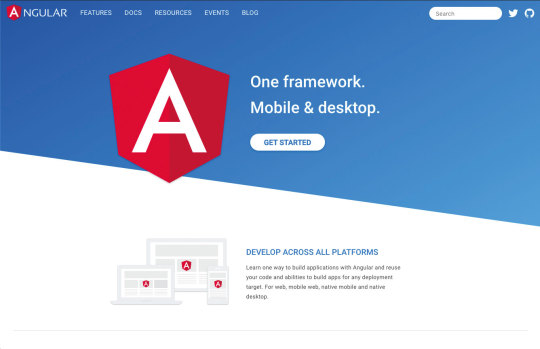
AngularJS was released in 2010 but by 2016 it was completely rewritten and released as Angular 2. Angular is a full- blown web framework developed by Google, which is used by Wix, Upwork, The Guardian, HBO and more.
Pros:
Exceptional support for TypeScript
MVVM enables developers to separate work on the same app section using the same set of data
Excellent documentation
Cons:
Has a bit of a learning curve
Migrating from an old version can be difficult.
Updates are introduced quite regularly meaning developers need to adapt to them
What's next?
In Angular 9, Ivy is the default compiler. It's been put in place to solve a lot of the issues around performance and file size. It should make applications smaller, faster and simpler.
When you compare previous versions of Angular to React and Vue, the final bundle sizes were a lot a bigger when using Angular. Ivy also makes Progressive Hydration possible, which is something the Angular team showed off at I/O 2019. Progressive Hydration uses Ivy to load progressively on the server and the client. For example, once a user begins to interact with a page, components' code along with any runtime is fetched piece by piece.
Ivy seems like the big focus going forward for Angular and the hope is to make it available for all apps. There will be an opt-out option in version 9, all the way through to Angular 10.
02. React

React was initially released in 2013 by Facebook and is used for building interactive web interfaces. It is used by Netflix, Dropbox, PayPal and Uber to name a few.
Pros:
React uses the virtual DOM, which has a positive impact on performance
JSX is easy to write
Updates don't compromise stability
Cons:
One of the main setbacks is needing third-party libraries to create more complex apps
Developers are left in the dark on the best way to develop
What's next?
At React Conf 2019, the React team touched on a number of things they have been working on. The first is Selective Hydration, which is where React will pause whatever it's working on in order to prioritise the components that the user is interacting with. As the user goes to interact with a particular section, that area will be hydrated. The team has also been working on Suspense, which is React's system for orchestrating the loading of code, data and images. This enables components to wait for something before they render.
Both Selective Hydration and Suspense are made possible by Concurrent Mode, which enables apps to be more responsive by giving React the ability to enter large blocks of lower priority work in order to focus on something that's a higher priority, like responding to user input. The team also mentioned accessibility as another area they have been looking at, by focusing on two particular topics – managing focus and input interfaces.
03. Vue
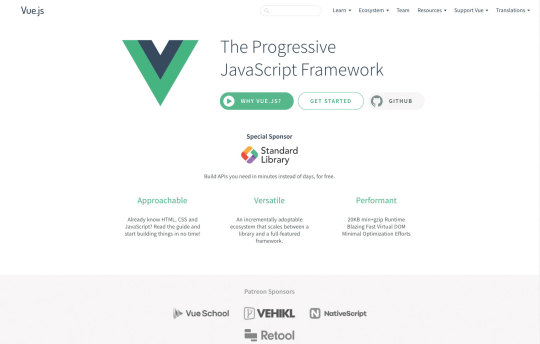
Vue was developed in 2014 by Evan You, an ex-Google employee. It is used by Xiaomi, Alibaba and GitLab. Vue managed to gain popularity and support from developers in a short space of time and without the backing of a major brand.
Pros:
Very light in size
Beginner friendly – easy to learn
Great community
Cons:
Not backed by a huge company, like React with Facebook and Angular with Google
No real structure
What's next?
Vue has set itself the target of being faster, smaller, more maintainable and making it easier for developers to target native. The next release (3.0) is due in Q1 2020, which includes a virtual DOM rewrite for better performance along with improved TypeScript Support. There is also the addition of the Composition API, which provides developers with a new way to create components and organise them by feature instead of operation.
Those developing Vue have also been busy working on Suspense, which suspends your component rendering and renders a fallback component until a condition is met.
One of the great things with Vue's updates is they sustain backward compatibility. They don't want you to break your old Vue projects. We saw this in the migration from 1.0 to 2.0 where 90 per cent of the API was the same.
How does the syntax of frameworks compare?
All three frameworks have undergone changes since their releases but one thing that's critical to understand is the syntax and how it differs. Let's have a look at how the syntax compares when it comes to simple event binding:
Vue: The v-on directive is used to attach event listeners that invoke methods on Vue instances. Directives are prefixed with v- in order to indicate that they are special attributes provided by Vue and apply special reactive behaviour to the rendered DOM. Event handlers can be provided either inline or as the name of the method.
React: React puts mark up and logic in JS and JSX, a syntax extension to JavaScript. With JSX, the function is passed as the event handler. Handling events with React elements is very similar to handling events on DOM elements. But there are some syntactic differences; for instance, React events are named using camelCase rather than lowercase.
Angular: Event binding syntax consists of a target event name within parentheses on the left of an equal sign and a quoted template statement on the right. Alternatively, you can use the on- prefix, known as the canonical form.
Popularity and market
Let's begin by looking at an overall picture of the three frameworks in regards to the rest of the web by examining stats from W3Techs. Angular is currently used by 0.4 per cent of all websites, with a JavaScript library market share of 0.5 per cent. React is used by 0.3 per cent of all websites and a 0.4 per cent JavaScript library market share and Vue has 0.3 per cent for both. This seems quite even and you would expect to see the numbers rise.
Google trends: Over the past 12 months, React is the most popular in search terms, closely followed by Angular. Vue.js is quite a way behind; however, one thing to remember is that Vue is still young compared to the other two.
Job searches: At the time of writing, React and Angular are quite closely matched in terms of job listings on Indeed with Vue a long way behind. On LinkedIn, however, there seems to be more demand for Vue developers.
Stack Overflow: If you look at the Stack Overflow Developer Survey results for 2019, React and Vue.js are both the most loved and wanted web frameworks. Angular sits down in ninth position for most loved but third most wanted.
GitHub: Vue has the most number of stars with 153k but it has the least number of contributors (283). React on the other hand has 140k stars and 1,341 contributors. Angular only has 59.6k stars but has the highest number of contributors out of the three with 1,579.
NPM Trends: The image above shows stats for the past 12 months, where you can see React has a higher number of downloads per month compared to Angular and Vue.
Mobile app development
One main focus for the big three is mobile deployment. React has React Native, which has become a popular choice for building iOS and Android apps not just for React users but also for the wider app development community. Angular developers can use NativeScript for native apps or Ionic for hybrid mobile apps, whereas Vue developers have a choice of NativeScript or Vue Native. Because of the popularity of mobile applications, this remains a key area of investment.
Other frameworks to look out for in 2020
If you want to try something new in 2020, check out these JavaScript frameworks.
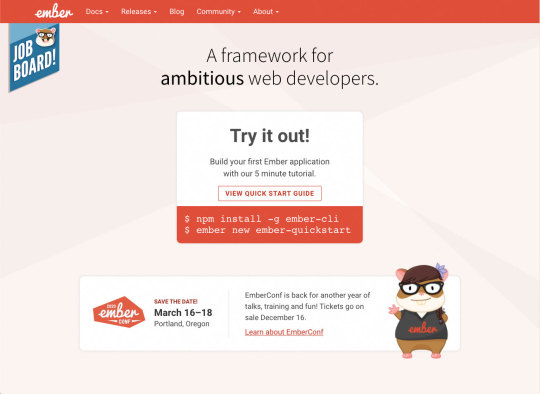
Ember: An open-source framework for building web applications that works based on the MVVM pattern. It is used by several big companies like Microsoft, Netflix and LinkedIn.
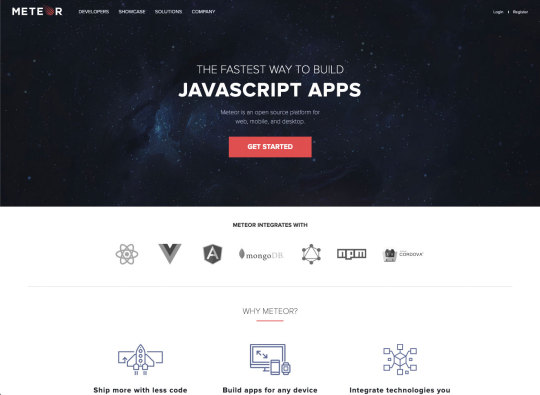
Meteor: A full-stack JavaScript platform for developing modern web and mobile applications. It's easy to learn and has a very supportive community.
Conclusion
All three frameworks are continually improving, which is an encouraging sign. Everyone has their own perspective and preferred solution about which one they should use but it really comes down to the size of the project and which makes you feel more comfortable.
The most important aspect is the continued support of their communities, so if you are planning to start a new project and have never used any of the three before, then I believe you are in safe hands with all of them. If you haven't had a chance to learn any of the three frameworks yet, then I suggest making it your New Year's resolution to start learning. The future will revolve around these three.
0 notes
Text
Recent Episodes of ShopTalk Show
There is a super cool new Podcast block for WordPress Gutenberg you use Jetpack (released in 8.5). I wanted to try it out, so below you’ll see recent episodes from ShopTalk Show. I’d tell you all about the recent episodes, except then this blog post wouldn’t age very well, because the point of this blog is showing recent episodes, not specific episodes, so it will change as we publish new shows.
Here they are:

412: RedwoodJS with Tom Preston-Warner – ShopTalk » Podcast Feed
412: RedwoodJS with Tom Preston-Warner 01:09:39
411: Vitaly Friedman and Smashing Magazine in 2020 01:06:25
410: Gulp with Blaine Bublitz 58:04
409: Stripe & Streaming with Suz Hinton 53:18
408: Frontend Masterery With Marc Grabanski 01:03:56
407: Building Browser Features with Brian Kardell 01:03:15
406: Jamstack with Divya Tagtachian 59:40
405: Cross-Cultural Design with Senongo Akpem 58:54
{"attributes":{"url":"https:\/\/shoptalkshow.com\/feed\/podcast\/","itemsToShow":8,"showEpisodeDescription":false,"primaryColor":"luminous-vivid-orange","hexPrimaryColor":"#ff6900","secondaryColor":"very-dark-gray","hexSecondaryColor":"#313131","showCoverArt":true,"hasCustomCSS":false,"customCSS":""},"title":"ShopTalk \u00bb Podcast Feed","link":"https:\/\/shoptalkshow.com\/","cover":"https:\/\/res.cloudinary.com\/css-tricks\/image\/upload\/v1549562952\/ShopTalk-3000_noum8w.png","tracks":[{"id":"podcast-track-1","link":"https:\/\/shoptalkshow.com\/412\/","src":"https:\/\/chtbl.com\/track\/643D\/cdn.simplecast.com\/audio\/167887\/167887a0-ac00-4cf9-bc69-b5ca845997db\/6d79ba8a-932b-43f9-8e1d-bc92b7683f57\/shoptalkshow-412_tc.mp3","type":"audio\/mpeg","description":"Tom Preston-Werner joins the show to talk about his latest project, RedwoodJS, and the decisions made about how it works, public APIs, how tied to Netlify RedwoodJS is, and why they're using Prisma.","title":"412: RedwoodJS with Tom Preston-Warner","duration":"01:09:39"},{"id":"podcast-track-2","link":"https:\/\/shoptalkshow.com\/411\/","src":"https:\/\/chtbl.com\/track\/643D\/cdn.simplecast.com\/audio\/167887\/167887a0-ac00-4cf9-bc69-b5ca845997db\/3c82a5df-c5ab-440b-9d47-82c1cf425f5b\/shoptalkshow-411_tc.mp3","type":"audio\/mpeg","description":"Show DescriptionVitaly Friedman talks with us about the changing landscape of publishing on the web, the changes seen in web conferences, the difference between a workshop and a webinar, and keeping up with all the technology in front end development. Links A Smashing Magazine An Event Apart Smashing Conf Environments for Humans Christopher Schmitt ShopTalk [\u2026]","title":"411: Vitaly Friedman and Smashing Magazine in 2020","duration":"01:06:25"},{"id":"podcast-track-3","link":"https:\/\/shoptalkshow.com\/410\/","src":"https:\/\/chtbl.com\/track\/643D\/cdn.simplecast.com\/audio\/167887\/167887a0-ac00-4cf9-bc69-b5ca845997db\/e984c911-2046-4400-ae1a-573330a56b48\/shoptalkshow-410_tc.mp3","type":"audio\/mpeg","description":"Show DescriptionWe\\'re chatting with Blaine Bublitz, lead at the Gulpjs open source project, about what Gulp is, the lack of money in open source, SVG and Gulp, handling dependencies in Gulp, and what the future of Gulp looks like. Links Gulp.js Tidelift Grunt Parcel Webpack Sponsors","title":"410: Gulp with Blaine Bublitz","duration":"58:04"},{"id":"podcast-track-4","link":"https:\/\/shoptalkshow.com\/409\/","src":"https:\/\/chtbl.com\/track\/643D\/cdn.simplecast.com\/audio\/167887\/167887a0-ac00-4cf9-bc69-b5ca845997db\/0deeace6-e73e-4bee-b1d9-742bfe131b0b\/shoptalkshow-409_tc.mp3","type":"audio\/mpeg","description":"Show DescriptionSuz Hinton stops by to talk about what it\\'s like to work at Stripe, how businesses should consider storing billing data, her live stream coding journey, and building and coding digital devices like the Arduino. Links JS Party Stripe Kickstarter Suz Hinton\u2019s Twitch Live Coding Setup Hashtiv.com Subscribe to Suz\u2019s Twitch channel Lua programming [\u2026]","title":"409: Stripe & Streaming with Suz Hinton","duration":"53:18"},{"id":"podcast-track-5","link":"https:\/\/shoptalkshow.com\/408\/","src":"https:\/\/chtbl.com\/track\/643D\/cdn.simplecast.com\/audio\/167887\/167887a0-ac00-4cf9-bc69-b5ca845997db\/475a8b3f-b6c6-43f4-bc78-bd2e70e7b179\/shoptalkshow-408_tc.mp3","type":"audio\/mpeg","description":"Show DescriptionMarc Grabanski is the CEO and UI Developer at Frontend Masters. He talks with us about what Frontend Masters is, who it\\'s for, how they decide what to teach, what\\'s coming up, and the question everyone asks: what do I learn next? Links Frontend Masters CodePen Radio #263 A New Editor Vue Sarah Drasner\u2019s [\u2026]","title":"408: Frontend Masterery With Marc Grabanski","duration":"01:03:56"},{"id":"podcast-track-6","link":"https:\/\/shoptalkshow.com\/407\/","src":"https:\/\/chtbl.com\/track\/643D\/cdn.simplecast.com\/audio\/167887\/167887a0-ac00-4cf9-bc69-b5ca845997db\/761841fb-aff3-4403-ae8e-1f81e4199003\/shoptalkshow-407_tc.mp3","type":"audio\/mpeg","description":"Show DescriptionBrian Kardell talks with us about how new features get into browsers and the fun and challenging journey it takes to get there. Links ShopTalk Show 306: Debugging CSS with Aimee Knight Igalia Toward Responsive Elements Eric Portis on Contain Your Excitement Sponsors","title":"407: Building Browser Features with Brian Kardell","duration":"01:03:15"},{"id":"podcast-track-7","link":"https:\/\/shoptalkshow.com\/406\/","src":"https:\/\/chtbl.com\/track\/643D\/cdn.simplecast.com\/audio\/167887\/167887a0-ac00-4cf9-bc69-b5ca845997db\/3e84ab16-ff02-439f-87ec-a7799e1d3cc8\/shoptalkshow-406_tc.mp3","type":"audio\/mpeg","description":"Show DescriptionDivya Tagtachian stops by the ShopTalk studios to answer questions about Jamstack and Netlify. What\\'s open authoring? Can a SPA be Jamstack? Can a site be too large for Jamstack? Is SSR the same thing as Jamstack? What\\'s happening with WordPress and Jamstack? Links Netlify Discourse Dev.to Netlify Build Plugins Zeit ShopTalk 403 Serverless [\u2026]","title":"406: Jamstack with Divya Tagtachian","duration":"59:40"},{"id":"podcast-track-8","link":"https:\/\/shoptalkshow.com\/405\/","src":"https:\/\/chtbl.com\/track\/643D\/cdn.simplecast.com\/audio\/167887\/167887a0-ac00-4cf9-bc69-b5ca845997db\/a3afa849-e5d3-445f-8c1e-ae766f790d5e\/shoptalkshow-405_tc.mp3","type":"audio\/mpeg","description":"Show DescriptionSeneongo Akpem talks with us about his new book, Cross-Cultural Design, and how building websites for people all over the world and from different cultures can be done better. Links Cross-Cultural Design Who I wrote Cross-Cultural Design for Mina Markham\u2019s talks Sponsors","title":"405: Cross-Cultural Design with Senongo Akpem","duration":"58:54"}],"playerId":"jetpack-podcast-player-block-13"}
( function( instanceId ) { document.getElementById( instanceId ).classList.remove( 'is-default' ); window.jetpackPodcastPlayers=(window.jetpackPodcastPlayers||[]); window.jetpackPodcastPlayers.push( instanceId ); } )( "jetpack-podcast-player-block-13" );
And if I wanted to show off recent episodes of JS Party, with different colors, I could do that too:

What I’m gonna share here is really mediocre – JS Party: JavaScript & Web Dev
Node 14, Vue’s Vite, and is-promise are in the news. We’ve got some working from home tips and unpopular opinions to share. And… shout outs! 👏
What I’m gonna share here is really mediocre 01:04:05
These buttons look like buttons 51:44
We got confs on lockdown 48:00
JS "Danger" Party 01:05:22
What's new and what's Next.js 01:17:34
{"attributes":{"url":"https:\/\/changelog.com\/jsparty\/feed","primaryColor":"vivid-red","hexPrimaryColor":"#cf2e2e","secondaryColor":"very-dark-gray","hexSecondaryColor":"#313131","itemsToShow":5,"showCoverArt":true,"showEpisodeDescription":true,"hasCustomCSS":false,"customCSS":""},"title":"JS Party: JavaScript & Web Dev","link":"https:\/\/changelog.com\/jsparty","cover":"https:\/\/cdn.changelog.com\/uploads\/covers\/js-party-original.png?v=63725770332","tracks":[{"id":"podcast-track-14","link":"https:\/\/changelog.com\/jsparty\/126","src":"https:\/\/cdn.changelog.com\/uploads\/jsparty\/126\/js-party-126.mp3","type":"audio\/mpeg","description":"Node 14, Vue\u2019s Vite, and is-promise are in the news. We\u2019ve got some working from home tips and unpopular opinions to share. And\u2026 shout outs! \ud83d\udc4f","title":"What I\u2019m gonna share here is really mediocre","duration":"01:04:05"},{"id":"podcast-track-15","link":"https:\/\/changelog.com\/jsparty\/125","src":"https:\/\/cdn.changelog.com\/uploads\/jsparty\/125\/js-party-125.mp3","type":"audio\/mpeg","description":"This week Feross and Emma chat with Segun Adebayo about Chakra UI, a modular React component library that\u2019s changing the game for design systems and app development.","title":"These buttons look like buttons","duration":"51:44"},{"id":"podcast-track-16","link":"https:\/\/changelog.com\/jsparty\/124","src":"https:\/\/cdn.changelog.com\/uploads\/jsparty\/124\/js-party-124.mp3","type":"audio\/mpeg","description":"Emma, Divya, and Suz are joined by Quincy Larson from freeCodeCamp where they chat about virtual conferences. Are they better than in-person conferences? What are the differences? Let\u2019s find out!","title":"We got confs on lockdown","duration":"48:00"},{"id":"podcast-track-17","link":"https:\/\/changelog.com\/jsparty\/123","src":"https:\/\/cdn.changelog.com\/uploads\/jsparty\/123\/js-party-123.mp3","type":"audio\/mpeg","description":"Our Jeopardy-style (but don\u2019t call it Jeopardy) game is back! This time Jerod plays the part of Alex Trabeck and Emma tries her hand at contestant-ing. Can Scott Tolinski from the Syntax podcast hang with Emma and Nick? Listen and play along!","title":"JS \"Danger\" Party","duration":"01:05:22"},{"id":"podcast-track-18","link":"https:\/\/changelog.com\/jsparty\/122","src":"https:\/\/cdn.changelog.com\/uploads\/jsparty\/122\/js-party-122.mp3","type":"audio\/mpeg","description":"Divya and Jerod welcome ZEIT founder Guillermo Rauch to the show for a deep discussion on the state of JAMstack, what\u2019s new & exciting with Next.js, and some big picture analysis of where the industry is heading.","title":"What's new and what's Next.js","duration":"01:17:34"}],"playerId":"jetpack-podcast-player-block-24"}
( function( instanceId ) { document.getElementById( instanceId ).classList.remove( 'is-default' ); window.jetpackPodcastPlayers=(window.jetpackPodcastPlayers||[]); window.jetpackPodcastPlayers.push( instanceId ); } )( "jetpack-podcast-player-block-24" );
I love that I get useful little features like for literally doing nothing. Big fan of Jetpack for that reason.
The post Recent Episodes of ShopTalk Show appeared first on CSS-Tricks.
Recent Episodes of ShopTalk Show published first on https://deskbysnafu.tumblr.com/
0 notes
Text
Recent Episodes of ShopTalk Show
There is a super cool new Podcast block for WordPress Gutenberg you use Jetpack (released in 8.5). I wanted to try it out, so below you’ll see recent episodes from ShopTalk Show. I’d tell you all about the recent episodes, except then this blog post wouldn’t age very well, because the point of this blog is showing recent episodes, not specific episodes, so it will change as we publish new shows.
Here they are:

412: RedwoodJS with Tom Preston-Warner
–
ShopTalk » Podcast Feed
412: RedwoodJS with Tom Preston-Warner 01:09:39
411: Vitaly Friedman and Smashing Magazine in 2020 01:06:25
410: Gulp with Blaine Bublitz 58:04
409: Stripe & Streaming with Suz Hinton 53:18
408: Frontend Masterery With Marc Grabanski 01:03:56
407: Building Browser Features with Brian Kardell 01:03:15
406: Jamstack with Divya Tagtachian 59:40
405: Cross-Cultural Design with Senongo Akpem 58:54
{“attributes”:{“url”:”https:\/\/shoptalkshow.com\/feed\/podcast\/”,”itemsToShow”:8,”showEpisodeDescription”:false,”primaryColor”:”luminous-vivid-orange”,”hexPrimaryColor”:”#ff6900″,”secondaryColor”:”very-dark-gray”,”hexSecondaryColor”:”#313131″,”showCoverArt”:true,”hasCustomCSS”:false,”customCSS”:””},”title”:”ShopTalk \u00bb Podcast Feed”,”link”:”https:\/\/shoptalkshow.com\/”,”cover”:”https:\/\/res.cloudinary.com\/css-tricks\/image\/upload\/v1549562952\/ShopTalk-3000_noum8w.png”,”tracks”:[{“id”:”podcast-track-1″,”link”:”https:\/\/shoptalkshow.com\/412\/”,”src”:”https:\/\/chtbl.com\/track\/643D\/cdn.simplecast.com\/audio\/167887\/167887a0-ac00-4cf9-bc69-b5ca845997db\/6d79ba8a-932b-43f9-8e1d-bc92b7683f57\/shoptalkshow-412_tc.mp3″,”type”:”audio\/mpeg”,”description”:”Tom Preston-Werner joins the show to talk about his latest project, RedwoodJS, and the decisions made about how it works, public APIs, how tied to Netlify RedwoodJS is, and why they’re using Prisma.”,”title”:”412: RedwoodJS with Tom Preston-Warner”,”duration”:”01:09:39″},{“id”:”podcast-track-2″,”link”:”https:\/\/shoptalkshow.com\/411\/”,”src”:”https:\/\/chtbl.com\/track\/643D\/cdn.simplecast.com\/audio\/167887\/167887a0-ac00-4cf9-bc69-b5ca845997db\/3c82a5df-c5ab-440b-9d47-82c1cf425f5b\/shoptalkshow-411_tc.mp3″,”type”:”audio\/mpeg”,”description”:”Show DescriptionVitaly Friedman talks with us about the changing landscape of publishing on the web, the changes seen in web conferences, the difference between a workshop and a webinar, and keeping up with all the technology in front end development. Links A Smashing Magazine An Event Apart Smashing Conf Environments for Humans Christopher Schmitt ShopTalk [\u2026]”,”title”:”411: Vitaly Friedman and Smashing Magazine in 2020″,”duration”:”01:06:25″},{“id”:”podcast-track-3″,”link”:”https:\/\/shoptalkshow.com\/410\/”,”src”:”https:\/\/chtbl.com\/track\/643D\/cdn.simplecast.com\/audio\/167887\/167887a0-ac00-4cf9-bc69-b5ca845997db\/e984c911-2046-4400-ae1a-573330a56b48\/shoptalkshow-410_tc.mp3″,”type”:”audio\/mpeg”,”description”:”Show DescriptionWe\\’re chatting with Blaine Bublitz, lead at the Gulpjs open source project, about what Gulp is, the lack of money in open source, SVG and Gulp, handling dependencies in Gulp, and what the future of Gulp looks like. Links Gulp.js Tidelift Grunt Parcel Webpack Sponsors”,”title”:”410: Gulp with Blaine Bublitz”,”duration”:”58:04″},{“id”:”podcast-track-4″,”link”:”https:\/\/shoptalkshow.com\/409\/”,”src”:”https:\/\/chtbl.com\/track\/643D\/cdn.simplecast.com\/audio\/167887\/167887a0-ac00-4cf9-bc69-b5ca845997db\/0deeace6-e73e-4bee-b1d9-742bfe131b0b\/shoptalkshow-409_tc.mp3″,”type”:”audio\/mpeg”,”description”:”Show DescriptionSuz Hinton stops by to talk about what it\\’s like to work at Stripe, how businesses should consider storing billing data, her live stream coding journey, and building and coding digital devices like the Arduino. Links JS Party Stripe Kickstarter Suz Hinton\u2019s Twitch Live Coding Setup Hashtiv.com Subscribe to Suz\u2019s Twitch channel Lua programming [\u2026]”,”title”:”409: Stripe & Streaming with Suz Hinton”,”duration”:”53:18″},{“id”:”podcast-track-5″,”link”:”https:\/\/shoptalkshow.com\/408\/”,”src”:”https:\/\/chtbl.com\/track\/643D\/cdn.simplecast.com\/audio\/167887\/167887a0-ac00-4cf9-bc69-b5ca845997db\/475a8b3f-b6c6-43f4-bc78-bd2e70e7b179\/shoptalkshow-408_tc.mp3″,”type”:”audio\/mpeg”,”description”:”Show DescriptionMarc Grabanski is the CEO and UI Developer at Frontend Masters. He talks with us about what Frontend Masters is, who it\\’s for, how they decide what to teach, what\\’s coming up, and the question everyone asks: what do I learn next? Links Frontend Masters CodePen Radio #263 A New Editor Vue Sarah Drasner\u2019s [\u2026]”,”title”:”408: Frontend Masterery With Marc Grabanski”,”duration”:”01:03:56″},{“id”:”podcast-track-6″,”link”:”https:\/\/shoptalkshow.com\/407\/”,”src”:”https:\/\/chtbl.com\/track\/643D\/cdn.simplecast.com\/audio\/167887\/167887a0-ac00-4cf9-bc69-b5ca845997db\/761841fb-aff3-4403-ae8e-1f81e4199003\/shoptalkshow-407_tc.mp3″,”type”:”audio\/mpeg”,”description”:”Show DescriptionBrian Kardell talks with us about how new features get into browsers and the fun and challenging journey it takes to get there. Links ShopTalk Show 306: Debugging CSS with Aimee Knight Igalia Toward Responsive Elements Eric Portis on Contain Your Excitement Sponsors”,”title”:”407: Building Browser Features with Brian Kardell”,”duration”:”01:03:15″},{“id”:”podcast-track-7″,”link”:”https:\/\/shoptalkshow.com\/406\/”,”src”:”https:\/\/chtbl.com\/track\/643D\/cdn.simplecast.com\/audio\/167887\/167887a0-ac00-4cf9-bc69-b5ca845997db\/3e84ab16-ff02-439f-87ec-a7799e1d3cc8\/shoptalkshow-406_tc.mp3″,”type”:”audio\/mpeg”,”description”:”Show DescriptionDivya Tagtachian stops by the ShopTalk studios to answer questions about Jamstack and Netlify. What\\’s open authoring? Can a SPA be Jamstack? Can a site be too large for Jamstack? Is SSR the same thing as Jamstack? What\\’s happening with WordPress and Jamstack? Links Netlify Discourse Dev.to Netlify Build Plugins Zeit ShopTalk 403 Serverless [\u2026]”,”title”:”406: Jamstack with Divya Tagtachian”,”duration”:”59:40″},{“id”:”podcast-track-8″,”link”:”https:\/\/shoptalkshow.com\/405\/”,”src”:”https:\/\/chtbl.com\/track\/643D\/cdn.simplecast.com\/audio\/167887\/167887a0-ac00-4cf9-bc69-b5ca845997db\/a3afa849-e5d3-445f-8c1e-ae766f790d5e\/shoptalkshow-405_tc.mp3″,”type”:”audio\/mpeg”,”description”:”Show DescriptionSeneongo Akpem talks with us about his new book, Cross-Cultural Design, and how building websites for people all over the world and from different cultures can be done better. Links Cross-Cultural Design Who I wrote Cross-Cultural Design for Mina Markham\u2019s talks Sponsors”,”title”:”405: Cross-Cultural Design with Senongo Akpem”,”duration”:”58:54″}],”playerId”:”jetpack-podcast-player-block-13″}
( function( instanceId ) { document.getElementById( instanceId ).classList.remove( ‘is-default’ ); window.jetpackPodcastPlayers=(window.jetpackPodcastPlayers||[]); window.jetpackPodcastPlayers.push( instanceId ); } )( “jetpack-podcast-player-block-13” );
And if I wanted to show off recent episodes of JS Party, with different colors, I could do that too:

What I’m gonna share here is really mediocre
–
JS Party: JavaScript & Web Dev
Node 14, Vue’s Vite, and is-promise are in the news. We’ve got some working from home tips and unpopular opinions to share. And… shout outs!

What I’m gonna share here is really mediocre 01:04:05
These buttons look like buttons 51:44
We got confs on lockdown 48:00
JS "Danger" Party 01:05:22
What's new and what's Next.js 01:17:34
{“attributes”:{“url”:”https:\/\/changelog.com\/jsparty\/feed”,”primaryColor”:”vivid-red”,”hexPrimaryColor”:”#cf2e2e”,”secondaryColor”:”very-dark-gray”,”hexSecondaryColor”:”#313131″,”itemsToShow”:5,”showCoverArt”:true,”showEpisodeDescription”:true,”hasCustomCSS”:false,”customCSS”:””},”title”:”JS Party: JavaScript & Web Dev”,”link”:”https:\/\/changelog.com\/jsparty”,”cover”:”https:\/\/cdn.changelog.com\/uploads\/covers\/js-party-original.png?v=63725770332″,”tracks”:[{“id”:”podcast-track-14″,”link”:”https:\/\/changelog.com\/jsparty\/126″,”src”:”https:\/\/cdn.changelog.com\/uploads\/jsparty\/126\/js-party-126.mp3″,”type”:”audio\/mpeg”,”description”:”Node 14, Vue\u2019s Vite, and is-promise are in the news. We\u2019ve got some working from home tips and unpopular opinions to share. And\u2026 shout outs! \ud83d\udc4f”,”title”:”What I\u2019m gonna share here is really mediocre”,”duration”:”01:04:05″},{“id”:”podcast-track-15″,”link”:”https:\/\/changelog.com\/jsparty\/125″,”src”:”https:\/\/cdn.changelog.com\/uploads\/jsparty\/125\/js-party-125.mp3″,”type”:”audio\/mpeg”,”description”:”This week Feross and Emma chat with Segun Adebayo about Chakra UI, a modular React component library that\u2019s changing the game for design systems and app development.”,”title”:”These buttons look like buttons”,”duration”:”51:44″},{“id”:”podcast-track-16″,”link”:”https:\/\/changelog.com\/jsparty\/124″,”src”:”https:\/\/cdn.changelog.com\/uploads\/jsparty\/124\/js-party-124.mp3″,”type”:”audio\/mpeg”,”description”:”Emma, Divya, and Suz are joined by Quincy Larson from freeCodeCamp where they chat about virtual conferences. Are they better than in-person conferences? What are the differences? Let\u2019s find out!”,”title”:”We got confs on lockdown”,”duration”:”48:00″},{“id”:”podcast-track-17″,”link”:”https:\/\/changelog.com\/jsparty\/123″,”src”:”https:\/\/cdn.changelog.com\/uploads\/jsparty\/123\/js-party-123.mp3″,”type”:”audio\/mpeg”,”description”:”Our Jeopardy-style (but don\u2019t call it Jeopardy) game is back! This time Jerod plays the part of Alex Trabeck and Emma tries her hand at contestant-ing. Can Scott Tolinski from the Syntax podcast hang with Emma and Nick? Listen and play along!”,”title”:”JS \”Danger\” Party”,”duration”:”01:05:22″},{“id”:”podcast-track-18″,”link”:”https:\/\/changelog.com\/jsparty\/122″,”src”:”https:\/\/cdn.changelog.com\/uploads\/jsparty\/122\/js-party-122.mp3″,”type”:”audio\/mpeg”,”description”:”Divya and Jerod welcome ZEIT founder Guillermo Rauch to the show for a deep discussion on the state of JAMstack, what\u2019s new & exciting with Next.js, and some big picture analysis of where the industry is heading.”,”title”:”What’s new and what’s Next.js”,”duration”:”01:17:34″}],”playerId”:”jetpack-podcast-player-block-24″}
( function( instanceId ) { document.getElementById( instanceId ).classList.remove( ‘is-default’ ); window.jetpackPodcastPlayers=(window.jetpackPodcastPlayers||[]); window.jetpackPodcastPlayers.push( instanceId ); } )( “jetpack-podcast-player-block-24” );
I love that I get useful little features like for literally doing nothing. Big fan of Jetpack for that reason.
The post Recent Episodes of ShopTalk Show appeared first on CSS-Tricks.
source https://css-tricks.com/recent-episodes-of-shoptalk-show/
from WordPress https://ift.tt/3cDREsd via IFTTT
0 notes
Text
Upcoming Web Design Conferences (April 2020 – August 2020)
Upcoming Web Design Conferences (April 2020 – August 2020)
Jan Constantin
2020-03-24T10:00:40+01:002020-03-25T06:05:34+00:00
Please note that dates are subject to change due to COVID-19, so it would be best to check the websites for further information regarding their conference dates and schedules.
We’re putting our heart and soul into crafting personal, inclusive and valuable events for all of us to become better professionals. With online workshops, we aim to give you the same experience and access to experts as in an in-person workshop, without needing to leave your desk. So you can learn at your own pace, in your own time, and follow interactive exercises along the way.

Excited and ready for the adventure, but think your manager could need just a little bit more persuasion? Don’t worry — we’ve prepared a neat lil’ template: Letter For The Boss Template. Good luck!
Boost your skills online and learn practical, actionable insights from experts in the industry, live. With insightful takeaways, interactive exercises, access to experts, slides, recordings and a friendly Q&A.
Explore all workshops →
Now, enough for the plug! Let’s dive into our list for April to August:
April 2020
May 2020
June 2020
July 2020
August 2020
April 2020
ScanAgile 2020 “The presentations and workshops are suitable for developers, scrum masters, product owners, team leaders, agile coaches, project and program managers, management consultants as well as executives.”
When: April 1-2, 2020
Where: Helsinki, Finland

Frontcon 2020 “FrontCon is a two-day conference that focuses on front-end concepts and technologies. This year, there will be 23 speakers, 270+ attendees, and 4 workshops.”
When: April 1-3, 2020
Where: Riga, Latvia

DevConf Johannesburg 2020 “DevConf is a community driven, developer focused, one-day conference hosted annually. The aim of the conference is to provide software developers a buffet of tools, practices and principles applicable to tackling current and future challenges in the South African software development environment. It's an event where attendees can learn, network and be inspired regardless of their specific technology stack and programming language of choice.”
When: April 2, 2020
Where: Johannesburg, South Africa

GenerateJS 2020 “Generate is brought to you by leading design magazine brands net and Creative Bloq. At our latest conference, once again hosted at Rich Mix in Shoreditch, you’ll be able to attend awesome talks on all things JavaScript, including the latest libraries, most fashionable frameworks and more than a hint of vanilla JS. Not only that but you’ll also get to network with fellow devs, grill JS experts, check out great web tech and unwind with some of our Creative Bloq break activities. And even once the conference is at an end, we have more on offer: we’d love for you to join us for a beverage or two in the bar.”
When: April 2, 2020
Where: London, United Kingdom
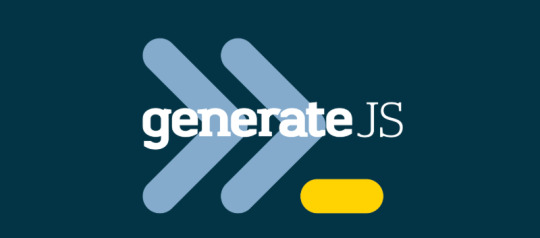
MIDWEST PHP 2020 “Midwest PHP is the only conference to offer a full digital library, giving you access to even more sessions day or night! ”
When: April 2-4, 2020
Where: Mineapolis, MN, USA

vueday 2020 “VueDay the first international conference in Italy entirely about Vue.js. Vue is a progressive framework for building user interfaces. Vue is designed from the ground up to be incrementally adoptable. The core library is focused on the view layer only, and is easy to pick up and integrate with other libraries or existing projects.”
When: April 3, 2020
Where: Verona, Italy

UXinsight 2020 “UXinsight is an international event for UX research professionals and anyone interested in UX research. This years’ theme focusses on the creative part of UX research. UX research is a field born in academia, but most UX researchers work in the creative field functioning as a bridge between technology and people. In our increasingly fast and agile working environments we need to be even more creative to deliver solid research. Let’s celebrate creativity together!”
When: April 6-7, 2020
Where: Breda, Netherlands

The Lead Developer New York 2020 “The Lead Developer New York is a two-day conference packed full of inspirational and practical sessions from the world’s top technical leaders, focussed around three core themes: teams, tech and tools. Engineering leaders learn to nurture high performing teams, apply the best tech and tools for the job, and thrive as they meet the challenges of software engineering leadership.”
When: April 7-8, 2020
Where: New York, NY, USA

HolyJS 2020 Piter “HolyJS 2020 Piter will be the ninth in a row JavaScript conference held by JUG Ru Group. More than 1000 JS developers will be brought together to discuss the present and future of JavaScript community with the world's leading experts and watch dozens of frontend talks and much more. We'll dwell on both backend and desktop.”
When: April 10-11, 2020
Where: St Petersburg, Russia

ODSC East 2020 - Open Data Science Conference “Open Data Science will bring together the open source and data science communities to help foster the growth of open source software used in data science. The primary focus will be on the languages and tools that enable effective data analysis.”
When: April 13-17, 2020
Where: Boston, MA, USA

Ai x Summit “This is the most important Industry AI Event of the year, hear from fellow CxOs, executives, chief data scientists, and thought leaders. Learn how AI and Data Science techniques are transforming business and prepare your company for the next wave of innovation by learning about: Deep Learning, Real-time Prediction, New product development, Data Visualization, Machine Learning, AI Tools and frameworks, Case studies, Automation, Sentiment Analysis, Open source AI/Data Science, Best practices, Law, Ethics and Governance.”
When: April 14-17, 2020
Where: Boston, MA, USA

JS Kongress 2020 “The focus of JS Kongress on April 15-16 2020 is Scaling JS – Pushing the Limits: Massive Platforms, Data-Driven Architectures, and Modern APIs. The #DeepTrack is about all things JavaScript. YOU create the program!”
When: April 15-16, 2020
Where: Munich, Germany
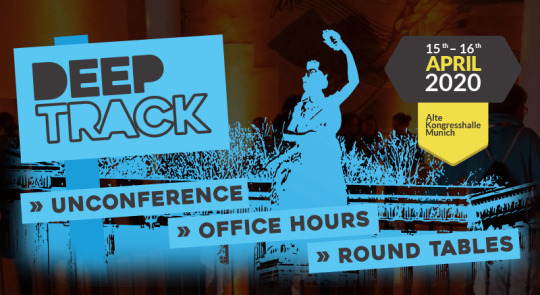
5G Africa Forum - Next Digital Revolution in Africa “"Next Digital Revolution in Africa" 5G network is the next generation of mobile internet connectivity, offering faster speeds and more reliable connections on smartphones and other devices than ever before. It is the fifth generation of cellular mobile communications, which will ultimately replace 4G LTE to provide faster and more reliable service with lower latency. The conference will look at the progress that has been made to date and the challenges ahead for policy-makers and stakeholders. Key areas being covered include connectivity, future deployment and business model impact. It will look at what a 5G world might look like and where Africa sits at a global level as it seeks to deliver on making 5G a reality by 2020. The forum will offer the ideal space for networking with industry players; senior managers, decision-makers, and practitioners operating in the industries and making the most of banking technologies.”
When: April 15-16, 2020
Where: Johannesburg, South Africa

DragonPy “Python Best Practices for the modern Web and Data Scientists A Python conference in Ljubljana, Slovenia, taking place on April 18 & 19, 2020. Followed by three days of sprints.”
When: April 18-19, 2020
Where: Ljubljana, Slovenia

SmashingConf San Francisco 2020 “Let’s rock’n’roll! For SmashingConf SF 2020, April 21–22, we’re bringing back two full days packed with front-end, UX and all that jazz! Live sessions on performance, accessibility, security, interface design, debugging and fancy CSS/JS techniques — and a few surprises along the way.”
When: April 20-23, 2020
Where: San Francisco, CA, USA

Devopsdays Baltimore 2020 “DevOpsDays is a worldwide series of technical conferences covering topics of software development, IT infrastructure operations, and the intersection between them. DevOpsDays Baltimore 2020 is run by volunteers from the Baltimore area and will be hosted at the Columbus Center (iMET) in downtown Baltimore on April 21-22, 2020. The event features single-track agenda with a combination of talks (30 minute open format and ignite format) and self-organized open space content. More information can be found on our website. ”
When: April 21-22, 2020
Where: Baltimore, MD, USA

NDC Porto 2020 “NDC Porto 2020 is a 4 day event with workshops 21-22 April followed by a 2 day conference 23-24 April. From 21-24 April 2020, NDC Porto will offer a combination of talks, lightning talks and panels.”
When: April 21-24, 2020
Where: Porto, Portugal

UX Healthcare London 2020 “We live in a world of constant change. Technology is evolving more rapidly than anyone would have ever thought. In healthcare, this change is not embraced as much as in other industries. Most healthcare systems weren’t designed for this world. With UX Healthcare we aim to make a difference, because better design is needed in the healthcare industry. From clinicians, healthcare insurances to hospital equipment manufacturers - our goal is to help healthcare across the world to implement the best user experiences possible.”
When: April 22-24, 2020
Where: London, United Kingdom

Uphill Conf 2020 “Uphill Conf is a two days conference on top of Mount Gurten with awesome speakers and unique workshops. Learn about the latest trends in frontend web technologies in an inspiring, open environment. Meet and connect with our speakers and other like-minded, passionate developers.”
When: April 23-24, 2020
Where: Bern, Switzerland

HalfStack Charlotte 2020 “An authentic, high value experience for attendees and sponsors focused on UI-centric JavaScript and web development. The priority for HalfStack is the attendee experience, with great food, drinks, talks, swag, and community. Hosted by London's longest-lived JavaScript meetup group, HalfStack is coming to Charlotte for the first time. HalfStack is a UI-centric, one-day single track conference hosted in a relaxed environment. HalfStack carefully curates talks that inspire and inform the audience in a highly interactive and entertaining manner. An initimate feeling where each attendee has time to meet one another; maximum capacity for HalfStack Charlotte is 200 attendees.”
When: April 24, 2020
Where: Charlotte, NC, USA

beyond tellerrand // DÜSSELDORF 2020 “beyond tellerrand celebrates the 10th edition in Düsseldorf. Join for two days of conference with the renowned familiar atmosphere to attend inspiring and exciting talks plus full-day workshops and side events around those dates. Not to forget the many networking opportunities.”
When: April 27-29, 2020
Where: Düsseldorf, Germany

May 2020
UX Burlington 2020 “UX Burlington is an event tailored for UX professionals seeking to stay ahead of the curve and push their work to the next level. UX Burlington is not a 101 event—we’d say more like a 301. Attendees include designers, developers, content producers, researchers, digital strategists, and product and brand managers. Every year 200+ UX practitioners attend to hear and learn from experts like yourself. In addition to keynotes, the conference runs two parallel tracks for part of the day, one catering to developers and the other a more general track tailored to UX/UI designers, researchers, and marketers.”
When: May 1, 2020
Where: Burlington, VT, USA

Texas Linux Fest 2020 “Texas Linux Fest is a weekend event geared towards individual users, rather than an expensive multi-workday expo that might cater primarily to sponsored attendees. Whether you use free software and Linux at home, in your place of business, in your school or non-profit, or you are simply curious, Texas Linux Fest offers something for you.”
When: May 1-2, 2020
Where: Austin, TX, USA

Into The Box 2020 “Into The Box is a 2-day, 2-track event with speakers from around the world presenting on topics surrounding modern web and mobile technologies, development processes, software craftsmanship and infrastructure. We will be located in the Hyatt Place The Woodlands locate at 1909 Research Forest Drive, The Woodlands, Texas 77380. Into The Box also offers 1 full day of training workshops, 2 conference days with over 30+ sessions, breakfast, hot lunches, and our now famous Mariachi Party!”
When: May 7-8, 2020
Where: The Woodlands, TX, USA

HalfStack Tel Aviv 2020 “An authentic, high value experience for attendees and sponsors focused on UI-centric JavaScript and web development. The priority for HalfStack is the attendee experience, with great food, drinks, talks, swag, and community. Hosted by London's longest-lived JavaScript meetup group, HalfStack is coming to Tel Aviv for the first time. HalfStack is a UI-centric, one-day single track conference hosted in a relaxed environment at the Bascula Circus Theatre. HalfStack carefully curates talks that inspire and inform the audience in a highly interactive and entertaining manner. An initimate feeling where each attendee has time to meet one another; maximum capacity for HalfStack Tel Aviv is 300 attendees.”
When: May 11, 2020
Where: Tel Aviv, Israel

Web Rebels 2020 “Web Rebels is a non-profit community conference for anyone who loves developing applications and services using web technology. Two days, one track, 16 speakers.”
When: May 14-15, 2020
Where: Oslo, Norway
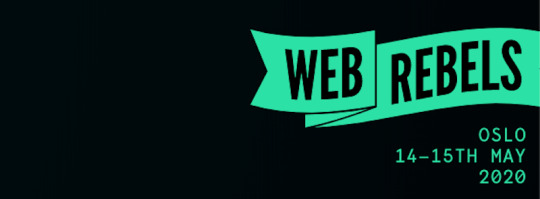
Dutch Clojure Days 2020 “The Annual International Gathering of Clojure Enthusiasts and Practitioners in the Netherlands! We welcome you to the 5th edition of our free and non-profit Clojure conference organised by the community, for the community with a full day of amazing talks in a friendly welcoming atmosphere.”
When: May 16, 2020
Where: Amsterdam, Netherlands

Voxxed Days Frontend Bucharest 2020 “This developer conference aims to bring together popular speakers, core developers of popular open source technologies and professionals willing to share their knowledge and experience on frontend development. With several tracks on different topics (JS, Angular, React, React Native, Web, Mobile, GraphQL, PWA, VueJS, HTML, CSS, Typescript, Frontend testing, UI/UX design, and so on) attendees can satisfy their curiosity and learn new skills while enjoying and having fun!”
When: May 19-20, 2020
Where: Bucharest, Romania

DevDay Faro 2020 “DEVDAY'20 is a deep tech festival for developers and tech enthusiasts. Save the dates on 2020/05/22-23 to join us in Faro/Portugal for talks, workshops and discussions. This year on May 22nd, we'll kick off the event with 5 all-day workshops on the latest concepts of software development. On May 23rd, we invite you to enjoy 10 selected talks on two stages all about coding and tech-related subjects.”
When: May 22-23, 2020
Where: Faro, Portugal

DigiMarCon Cruise 2020 - Digital Marketing Conference At Sea “Immerse yourself in topics like digital strategy, programmatic advertising, web experience management, usability / design, mobile marketing & retargeting, customer engagement, user acquisition, social media marketing, targeting & optimization, video marketing, data science & big data, web analytics & A/B testing, email marketing, content marketing, conversion rate optimization, search engine optimization, paid search marketing, geo-targeting, predictive analysis & attribution, growth hacking, conversion rate optimization, growth marketing tools, marketing & sales automation, sustainable growth strategies, product marketing & UX / UI and much, much more!”
When: May 23-28, 2020
Where: Baltimore, MD, USA

PGCon 2020 “PGCon is an annual conference for users and developers of PostgreSQL, a leading relational database, which just happens to be open source. PGCon is the place to meet, discuss, build relationships, learn valuable insights, and generally chat about the work you are doing with PostgreSQL. If you want to learn why so many people are moving to PostgreSQL, PGCon will be the place to find out why. Whether you are a casual user or you've been working with PostgreSQL for years, PGCon will have something for you.”
When: May 27-28, 2020
Where: Ottawa, Canada

June 2020
2020 AI & Innovation “Artificial Intelligence is based on the research of fundamental and applied sciences. Through the evolution of information and engineering, it has gradually penetrated and changed not only our lives but our work style, which has resulted in bringing new experiences and convenience. And yet we’re facing with an unprecedented challenge and a crisis of privacy. An agenda, such diversified and interdisciplinary, ACEAI and the 8th ISFAS sincerely invite all relevant professionals in both academic and the industry to present and to exchange. All relevant abstracts/full papers in regards to “Fundamental and Applied Sciences” and “Engineering and Information” are welcomed, especially in the fields of AI, 5G, IoT and Blockchain.”
When: June 1-4, 2020
Where: Taipei, Taiwan

Amsterdam JSNation Conference 2020 “Amsterdam JSNation is going to be the main happening of the JS scene in 2020. The conference unites library authors and core teams with fresh ideas, great people, and a summer Amsterdam in the background. We recognize JavaScript development as an art of engineering, and that's why the conference offers both a JS-driven art exhibition and audiovisual performances during the afterparty. After the event, we'll explore the well-known Amsterdam museums together, and later on, we'll gather for a JS hangout in the Vondelpark.”
When: June 3-5, 2020
Where: Amsterdam, Netherlands

NDC Oslo 2020 “From 8-12 June 2020, Oslo Spektrum will once again host NDC Oslo. NDC Oslo is a 5-day event with 2 days of pre-conference workshops and 3 days of conference. The conference will cover topics such as: NET Framework - Agile - C++ - Cloud - Database - Design - Devops - Embedded - Front-End Framework - Fun - Functional Programming - Gadgets - Internet of Things - Javascript - Microsoft - Misc Languages - Mobile - People - Programming Languages - Security - Techniques - Testing - Tools - UX – Web and more.”
When: June 8-12, 2020
Where: Oslo, Norway

SmashingConf Austin 2020 “The Smashing Cat is coming to Austin, Texas, y’all! Meet an inclusive, practical and friendly conference for front-end developers and designers who love their work. One track, two days, 14 speakers and 500 truly smashing attendees. But most importantly: a community that cares, shares and learns from each other.”
When: June 8-11, 2020
Where: Austin, TX, USA

RightsCon Costa Rica 2020 “Originally called the Silicon Valley Human Rights Conference, RightsCon rotated between San Francisco and another global city. Now, RightsCon is an annual event that rotates its location each year to new host cities around the world that are power centers for technology and human rights. In 2019, we hosted RightsCon in Tunis, Tunisia, and we look forward to gathering in San José, Costa Rica, in 2020.”
When: June 9-12, 2020
Where: San José, Costa Rica

Craft Conference 2020 “CRAFT is about software craftsmanship, which tools, methods, practices should be part of the toolbox of a modern developer and company, and it is a compass on new technologies, trends. You can learn from the best speakers and practitioners in our community.”
When: June 9-12, 2020
Where: Budapest, Hungary
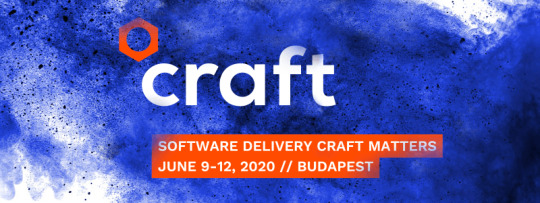
Pixel Pioneers Bristol 2020 “A one-day conference of practical and inspiring design and front-end talks, featuring eight world-class speakers, preceded by a workshop day. Here's what you get for your conference ticket: - Eight practical sessions with actionable takeaways, - First dibs on limited tickets for workshops and side events, - Drinks and refreshments, - After-party with complimentary drinks.”
When: June 11-12, 2020
Where: Bristol, UK

Accessibility Club Summit 2020 “After last year's very first and hugely successful summit in Berlin we are giddy with excitement to announce our next summit for 2020! Again, the summit will be jointly run by multiple web accessibility and inclusive design related meetups from all over Europe, and again there will be a premiere: For the first time, the Accessibility Club will meet outside of Germany, this time welcoming you to Amsterdam! The summit will take place right after CSS Day 2020 and again feature a full-day barcamp a second day with community run workshops. There are still a lot of details to be figured out, but you should definitely save the date already!”
When: June 13-14, 2020
Where: Amsterdam, Netherlands

KubeCologne Conference 2020 “KubeCologne is about Cloud-Native Thinking, Learning Kubernetes and its ecosystem, networking and community love! Be part of the second KubeCologne Conference on June 17th in Mediapark Cologne, learn and love Kubernetes® and Cloud-Native Thinking! Be part of the second KubeCologne Conference on June 17th in Mediapark Cologne, learn and love Kubernetes® and Cloud-Native Thinking! Meet with experts and users alike to learn and share knowledge on your journey to enterprise-grade container platforms and CI/CD chains.”
When: June 17, 2020
Where: Cologne, Germany

Swiss PGDay 2020 “This day is all about PostgreSQL - the world's most advanced open source database. Take the opportunity to meet with other people interested in PostgreSQL in Switzerland. Beside the talks we offer the chance to network during the day and are pleased to invite you for a round of drinks after the meeting. The event is suitable for everybody, from first-time users to experts and from clerks to decision-makers. It is a two track conference, a complete track in English and one in German.”
When: June 18-19, 2020
Where: Rapperswil, Switzerland

JSCONF.BE 2020 “We’re looking forward to JSCONF.BE 2020 which will take place June 22-23, 2020 in Brussels. We plan to make June 23 a day packed with valuable and exciting content for the JavaScript community! This year there will be two themes: -Security -Reactive Frameworks/Serverless Architectures. Additionally, we’ll have a handful of break-out tracks for exciting niche topics such as AI/Machine Learning, Blockchain, Augmented Reality.”
When: June 22-23, 2020
Where: Brussels, Belgium

LeadDev Manager of Managers London 2020 “Lead Dev Managers of Managers is a new, intimate, one-day conference for those leading teams of teams and managing other managers (Senior Managers, Directors, Heads and VPs of Engineering, and CTOs). Hosted by Monzo CTO Meri Williams, the event is taking place on 23 June, the day before Lead Dev London (24 & 25 June). It will feature a blend of talk sessions and practical structured discussions; help you to become a better leader & manager, build a peer network, and enable your teams to be higher performing.”
When: June 23, 2020
Where: London, UK

OpenJS World 2020 “OpenJS Foundation’s annual event brings together the JavaScript and web ecosystem including Node.js, Electron, AMP and more. Learn and engage with leaders deploying innovative applications at massive scale.”
When: June 23-24, 2020
Where: Austin, TX, USA

enterJS 2020 “EnterJS opens its gates for the seventh time in 2020 and offers developers a comprehensive view of the JavaScript-based enterprise world. The focus is not only on the latest trends around the JavaScript programming language itself, but also on the frameworks and tools that are part of skillset of every JavaScript developer. Of course, the conference also takes a look at the latest technologies and frameworks. Always with the aim of being able to assess whether it is worth using them in your own team.”
When: June 23-26, 2020
Where: Darmstadt, Germany

The Perl Conference 2020 “The Perl Conference is a high-quality, inexpensive, technical Conference that celebrates the family of Perl programming languages. The beauty of The Perl Conference is that it remains accessible to everyone regardless of experience, yet it is still valuable to the most skilled programmers.”
When: June 23-27, 2020
Where: Houston, TX, USA

Lead Dev London 2020 “Join our community at the Lead Dev London, where technical leaders learn to nurture high performing teams, apply the best tech and tools for the job, and thrive as they meet the challenges of software engineering leadership.”
When: June 24-25, 2020
Where: London, United Kingdom

UX Healthcare Amsterdam 2020 “We live in a world of constant change. Technology is evolving more rapidly than anyone would have ever thought. In healthcare, this change is not embraced as much as in other industries. Most healthcare systems weren’t designed for this world. With UX Healthcare we aim to make a difference, because better design is needed in the healthcare industry. From clinicians, healthcare insurances to hospital equipment manufacturers - our goal is to help healthcare across the world to implement the best user experiences possible.”
When: June 24-26, 2020
Where: Amsterdam, Netherlands

ADDC - App Design & Development Conference “Single-track international conference for iOS & Android developers and UX/UI designers in Barcelona, Spain. ADDC aims to create an opportunity for designers and developers to meet, find new ways to work together and get inspired in an open, inclusive and collaborative space. Our talks are crafted to be valuable for both designers & developers.”
When: June 24-26, 2020
Where: Barcelona, Spain

July 2020
OdessaJS'2020 “Enjoy Odessa together with 500+ international participants and share your knowledge with the community. Welcome to submit your talk and get ready for 2 days of endless fun and be one of the 20+ speakers of the greatest summer Ukrainian JS gathering.”
When: July 4-5, 2020
Where: Odessa, Ukraine
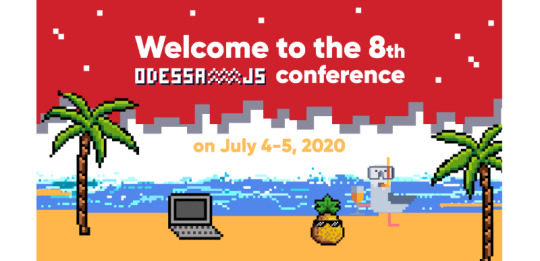
NodeConf Colombia 2020 “NodeConf Colombia 2020 is the first international event focused on the entire Node.js ecosystem. It’s a non-profit event, where our attendees will be sharing in an environment of inclusion and respect, having access to relevant information through talks, workshops, and great experiences with the Colombian Node community.”
When: July 10-11, 2020
Where: Medellín, Colombia
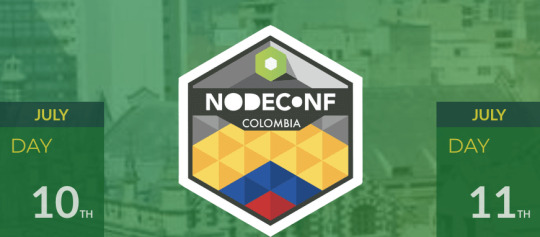
O'Reilly Open Source Software Conference (OSCON) “OSCON: Ground Zero for the evolution of Open Source. For over 20 years, OSCON has been the focal point of the open source movement. The inception of OSCON came from an event focused on Perl and grew to cover the other scripting languages. It has since evolved into the destination for all things free and open. The event has also provided a platform for the launch of major initiatives such as Kubernetes 1.0 and OpenStack—both announced at OSCON. Today, OSCON continues to be the catalyst for innovation, bringing together large corporations and grass-roots communities to share insights and foster change. Open source helps technology to thrive, and OSCON continues on with the tradition of bringing you the latest technological advances and a path to successfully implement open source in your workflow.”
When: July 13-16, 2020
Where: Portland, OR, USA

CSSCAMP 2020 “One-day, one-track conference for developers and designers who work on the web. International conference dedicated to the developers, designers and engineers who work on the web and build the world’s most engaging user interfaces. Learn how to push the boundaries with the latest technologies, cutting edge techniques, and tools.”
When: July 15, 2020
Where: Barcelona, Spain

Algorithm Conference 2020 “Algorithms have found their way into practically every aspect of our lives. Wherever you look, howe’er you range, algorithms are hard to miss. Increasingly being deployed to guide you along. Algorithm Conference 2020 will bring you 3 days of high-level workshops and presentations that show how algorithms have been shaping and will continue to shape every aspect of our lives. Special consideration will be given to sessions that highlight innovative technical and commercial developments in big data, artificial intelligence and blockchain technologies, their ethical and privacy implications, and how they impact and are impacted by public policies. Researchers from the academia, developers and technical managers from startups and established companies will be on hand to share insights on the current state of development in big data, artificial intelligence and blockchain technologies, and their future trajectories. Those overseeing the rollout of these technologies on the management side and people involved in influencing and advising policy makers will also be on hand to share their insights.”
When: July 16-18, 2020
Where: Austin, TX, USA

DevopsDays Medellin 2020 “DevOpsDays is an international event of technical conferences on software development, IT infrastructure and operations and the intersection between them. This year this world reference conference on DevOps arrives in Medellin July 30 and 31 of 2020. DevOpsDays events present a combination of talks and self-organized open space content. Topics often include Pipelines Integration and Continuous Deployment (CI / CD), Test Automation, Security, Lean and Organizational Culture, among others.”
When: July 30-31, 2020
Where: Medellín, Colombia

August 2020
THAT Conference 2020 “Over four days, folks of diverse technology backgrounds and expertise levels gather to take advantage of multiple learning mediums to maximize one’s community and career advancements. An inclusive, multi-day event for anyone passionate about learning and sharing all things mobile, web, cloud, IoT, and technology. Engage in a wide range of software development topics with 150+ sessions, massive open spaces, and culture of creating and giving back. And there’s bacon, water slides, and, you know what? Bring the whole family.”
When: August 3-6, 2020
Where: Wisconsin Dells, WI, USA

UX And Digital Design Week 2020 “Create experiences that people will fall in love with. Get inspiration for your current projects and advice on how to build a design team of your dreams. Find out the secrets of what makes products successful and what mistakes companies made when they were building new services.”
When: August 10-14, 2020
Where: London, UK

International Travel Roadshow-Kuala Lumpur “International Travel Roadshowis a unique & well known travel roadshow which is a connects the world wide sellers (exhibitors) and Buyers (Travel agents / Tour Operators) from the local city. The Roadshow usually happens 1 day in each city to meet the hand picked outbound tour operators. ITR is not like any other travel exhibition just for the below reasons. 1Day - 1 City - 100 Buyers Pre-fix Appointment with Buyers Networking Lunch with Buyers Luxury - MICE - Business Travel Invitation to Potential Buyers Full Day Roadshow.”
When: August 13, 2020
Where: Kuala Lumpur, Malaysia

International Travel Roadshow-Singapore “International Travel Roadshowis a unique & well known travel roadshow which is a connects the world wide sellers (exhibitors) and Buyers (Travel agents / Tour Operators) from the local city. The Roadshow usually happens 1 day in each city to meet the hand picked outbound tour operators. ITR is not like any other travel exhibition just for the below reasons. 1Day - 1 City - 100 Buyers Pre-fix Appointment with Buyers Networking Lunch with Buyers Luxury - MICE - Business Travel Invitation to Potential Buyers Full Day Roadshow.”
When: August 14, 2020
Where: Singapore, Singapore

HalfStack NYC 2020 “An authentic, high value experience for attendees and sponsors focused on UI-centric JavaScript and web development. The priority for HalfStack is the attendee experience, with great food, drinks, talks, swag, and community. Hosted by London's longest-lived JavaScript meetup group, HalfStack is returning to New York for the second time. HalfStack is a UI-centric, one-day single track conference hosted in a relaxed environment. HalfStack carefully curates talks that inspire and inform the audience in a highly interactive and entertaining manner. An initimate feeling where each attendee has time to meet one another; maximum capacity for New York HalfStack is 270 attendees.”
When: August 14, 2020
Where: New York, NY, USA

International Travel Roadshow-Melbourne “ITR Australia ( Sydney & Melbourne ) Travel Roadshow is carefully designed to create a great platform for the suppliers around the world to meet the top notch travel buyers in Australia region. Buyers and Sellers love this roadshow for the following reasons. 2 Days - 2 Cities - 60 Buyers Pre-fix Appointment with Buyers Presentation Cocktail Networking Party Invitation to Potential Buyers Full Day Roadshow.”
When: August 18, 2020
Where: Melbourne, Australia

International Travel Roadshow-Sydney “ITR Australia ( Sydney & Melbourne ) Travel Roadshow is carefully designed to create a great platform for the suppliers around the world to meet the top notch travel buyers in Australia region. Buyers and Sellers love this roadshow for the following reasons. 2 Days - 2 Cities - 60 Buyers Pre-fix Appointment with Buyers Presentation Cocktail Networking Party Invitation to Potential Buyers Full Day Roadshow.”
When: August 21, 2020
Where: Sydney, Australia

Beyond Tellerrand Berlin 2020 “Established in 2014, beyond tellerrand is back for the 7th time in Berlin. Two days of conference with talks about design, technology and many opportunities to meet old and make new friends. Don’t miss out.”
When: August 24-27, 2020
Where: Berlin, Germany

“Codebreeze 2020 “Codebreeze is an unconference with very little structure. Actually, it’s not a conference at all. Codebreeze is a time and place for software craftspeople to meet. We would like to have like-minded people to gather in one place and have long conversations about our craft over a drink. And to practice our coding skills.”
When: August 31- September 7, 2020
Where: Turku, Finland

Where Are You Going?
If you’re planning to attend any of these events, we’d love to hear your thoughts in the comments section below. What are you most excited about? What are you looking forward to learning and experiencing?
By the way, the Smashing team is constantly organizing a series of conferences and workshops! We’d love to welcome you there!

(vf, il)
0 notes